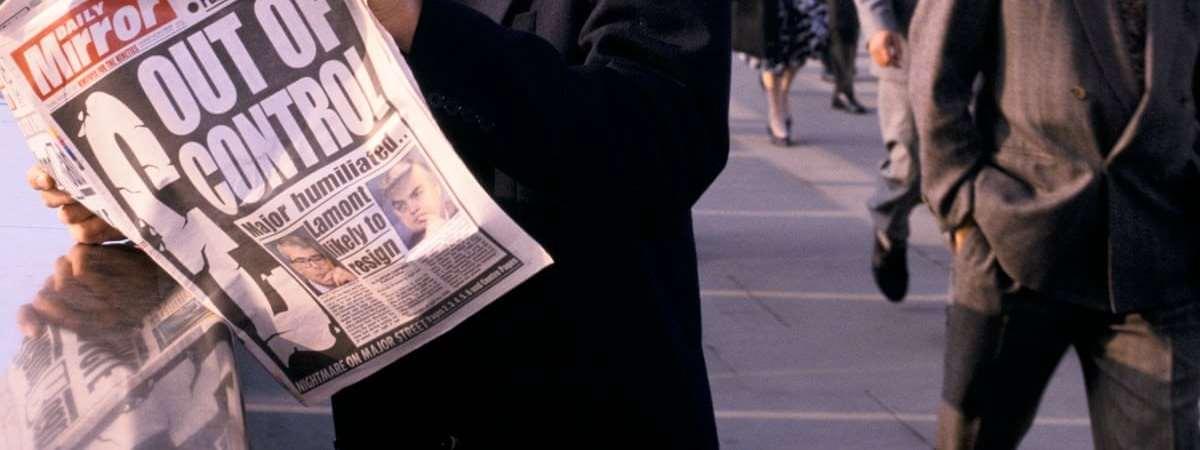Anotefromtheeditors
EconomicPersepectivesisthePerseEconomics Magazinededicatedtostudentsrunbystudents. Publishedtermly,EconomicPersepectivesseeksto explorethecomplexworldofEconomicsonatheme-by -themebasis.
ForourSummeredition,wehavechosenthetheme Crisis.Theworldtodayfeelsincreasinglyunstable.From geopoliticalissuessuchastheUkrainewar,Israel-Hamas andincreasingtensionsinAsia,todomesticissuessuch assluggishgrowth,in��ationandwideninginequality.Eveninternationaltradeseemstobeunder threat,withtariffsandprotectionismmakingacomeback.Crisis,itseems,isthede��ningbackdrop intoday’seconomy.
Thiseditionincludesfourteenuniquearticlesdivingintomanyaspectsofcrisissuchaseconomic, politicalandsocialissues.Thiseditionalsoincludes��vetimelypiecesoncurrentaffairsandtwo insightsintofamouseconomistswhoseideashaveshapedhowweunderstandandrespondto crises.Wealsohave4bookreviewsfromtheChristmasBookReviewCompetition.
Thecollectionofdiversearticlesaimstoshowcasethediversityanddepthofthoughtwithinour writers.Fromre��ectiveessaysonhistoricalturningpointstosharpanalysisoncurrentglobal tensions,wehopethateverysinglearticleofferssomethingthatinformsandinspiresyou.
We’reveryexcitedtosharethiseditionwithyou!Astheworldnavigatesthecurrentuncertainty, webelievedrawingattentiontothesetopicsmattermorethanever.Weinviteyoutodiveinand enjoytheSummereditionofEconomicPersepectives!
RichardZ,AshvikG,SamR
WhatDidtheDotComBubble
TeachUsAbout TechHypeand MarketMania?
Thedotcombubbleoccurredduringthelateyears ofthe1990'sandwasacrashthatwascausedby overoptimismsurroundingthedevelopmentofthe internet.Inasmallperiod,hugeamountsof internet-basedcompaniesstarted,andprofessional investorsandthepublichadthebeliefthatthe internetwouldtransformtheeconomy.Thisledto largescaleinvestmentinthesecompanies.
Thisoccurredprimarilyduetothewidespread beliefthatanyinvolvementwithintheinternet wouldleadtohugepro��ts,despitethecompany’s realstability.Thisoptimismandthesubsequent expectationsweremassivelymisplacedconsidering thesecompanieshadlittletonovalueandnoreal pro��t-makingplan.Manyofthemhadnomore thana‘.com’label.Despitethis,therevaluestill rocketedundertheassumptionthat��rstentryinto theinternetworldwouldguaranteefutures success.Eventuallythebubbleburstintheearly 2000's,andtrillionsofdollarsofvaluewerelost. Thistaughtvaluablelessonstosocietyaroundthe issuesofmisplacedexpectationsandtherisks aroundhypedrivenvaluations.
Therapidin��ationoftechstockpricesduringthe dot-combubblewasanexampleofspeculative mania.Thisiswhenpeopleinvestbasedonpublic excitementratherthan��nancialindicatorsshowing itstruevalue.Herdingbehaviourwasalso displayed,aspeopleirrationallyinvestedinto
internetcompaniespurelyintheaimto‘followthe crowd’. Psychologicaleffectssuchas overcon��denceandcon��rmationbiasfurther helpeddrivethesevaluationsup.Peoplewerenot onlyexcitedaboutthefutureoftheinternet,but theywerealsoafraidnottoinvestinit,believing thatinnotdoingso,theywouldmissoutonlarge pro��ts.
Oneofthebiggestlessonsthatinvestorshave learntfromthebubbleisthatvaluedoesnot alwaysliveuptohypeandoptimisticexpectations setuponthesecompanies.Evenwhennew technologysuchastheinternetistransformative, manyoftheoriginalcompaniesfailandonlya smallproportiongoontoachievesuccessinthe market.Manyofthecompaniesthatcollapsed duringthecrashwerenotwrongaboutthefuture ofinternettechnologyortheirsubsequentideas, buttheyweretooearlyintothemarketwhichled tothembeingpoorlymanagedandbuilton unstablebusinessmodels.(Thisdidhoweverlead tosecondentrantshavinghugesuccessasa result.)AnexampleisWebvan,acompanywhich expectedtheriseofonlinegroceryshopping,butit expandeditsoperationsatanunsustainablerate, astheyhadnotbuilttheef��cientlogisticsbehind it��rst.Thisfailureshowsthatbeingaheadof othersinthemarketmeanslittlewithout��nancial discipline.




However,somecompaniessuchasAmazonand eBaysurvivedthecrashandhavegoneonto becomedominantretailersinthemarket,somuch thatitisnearlyimpossibleforothermarket entrantstoendure.Thiswasbecausetheycreated stablebusinessplans,growingtheircompany sustainablybeforetheirdramaticincreasein valuation.Eventually,allowingthemtomakelarge pro��tsthatwerestableandjusti��ed.Amazon focusedoncustomersatisfactionandlong-term planningwhilstothersimilarcompaniesattempted tothriveofftheshort-termhype.Thiscontrast showsthatevenduringperiodsofspeculation, lastingtechnologiescanstillbedeveloped,evenif manyoftheearlyentrantstothemarketfail.The dot-combubblespedupthedevelopmentofkey infrastructure,suchasdatacentresand broadband,whichhavenowbecomethe foundationsoftoday’sdigitaleconomy.
Anotherkeylessonfromthecollapseisthatall valuationsmustbebackedbysigni��cantdata ratherthanpureoptimism.Duringthebubble, investorsneglectedtraditional��nancialanalysis andwerevaluingcompaniesbasedoffpredicted webtraf��candpossiblefuturemarketshare,even thoughthesethingsmayneveroccur.Theeventual burstandcollapseremindedinvestorsthat businessesmustsustainablygeneraterealrevenue beforegoingontoeventuallyturnapro��tto increasetheirvaluation.
Theselessonsremainimportanttoinvestorsin today'seconomy.Overthepastdecade,areassuch ascryptocurrenciesandAI,haveallseensimilar signsofhypeandoverspeculation,re��ecting previouspatternsseeninthedotcomera.Likethe internetinthelate90’s,thetechnologybeing developedtodaywillbesigni��cantinshapingthe future,andthismaycausehypetoonceagain alterinvestmentsmadebythepublic. Furthermore,thespeedofcommunication nowadays,withplatformssuchasX,meansthat thesespikesdrivenbyhype,occurmuchmore rapidlythantheypreviouslydid,thusreducingthe timeforrational��nancialanalysis,pavingtheway formoreimpulsivebehaviour
Inconclusion,thedot-combubbleprovidesa lastinglessontoinvestorsthatwhileinnovation candriveprogressandfuturedevelopments, uncheckedhypeandoverspeculationoftenleadsto economicdamageandcollapse.Thecrashrevealed thedangersofignoringfundamentalanalysisin favourofoptimism,andhowirrational,herd-driven investingcandistortmarkets.However,thebubble alsohighlightedthatperiodsofextreme speculationcanprovideabasisforfuture breakthroughs,asevidencedwithcompanieslike Amazon.Asthemoderneconomymovesintonew technologicalinnovation,basinginvestmentson solid��nancialprinciplesandindications,will remaincrucialinavoidinganothercollapse.
GeorgeS,Y12
HowCrisesShapeEconomic Policy
AlmostacenturyhaspassedsincetheGreat Depression,themostsevereeconomicdownturnin modernhistory.WithGDPfallingby30%, unemploymentrisingtohistoriclevelsof25%and industrialproductionhalving,ittookoveradecade toreturntopre-depressionoutputlevels.
Economistsaccreditthiscrisistofourmainfactors: thestockmarketcrashof1929;thecollapseof worldtradeduetoincreasedimportduties;bank failuresandpanics;andthecollapseofthemoney supply.
wartimeeconomy.AsKeynesianismwasadopted, ��scalpolicysustaineddemandandprioritisedfull employment.Theresultwasstronggrowth,low unemploymentandrisinglivingstandardsacross theindustrialisedworld.Thisbecameknownasthe ‘GoldenAgeofCapitalism’. ThatwasuntiltheGreatIn��ationofthe1970s.
However,muchofthiswasmadeworsebythe starkfailuresofclassicaleconomics.
Theoilcrisesof1973and1979–causingoilprices toskyrocket–-triggeredsharprisesinin��ation andstagnantgrowth.Keynesianismcrumbled underthisweightinfearthattighteningpolicy wouldincreaseunemployment,allowingin��ation tospiral.
Asmarketsandunemploymentspiralled,the commitmenttoalimitedgovernmentrevealedits ��aws.Fallingincomesandincreasedsavingfurther depressedconsumptionandworsenedthe downturn.However,JohnMaynardKeynesargued thecaseforactivegovernmentinterventionto stimulatedemandandsupportemployment.
ItwasonlytillthepostwarerawhenKeynesian economicsbecamewidespread.Beforethis, governmentswereforcedtotakeunprecedented controloverproductionandlabourtomanagethe
Monetarismgainedtractionbyemphasisingthe controlofin��ationthroughmanagingthemoney supply,ratherthanrelyingongovernment spendingtostimulatedemand.Monetaristsargued thatmonetarypolicywastooloose–withthe moneysupplyalmostdoublinginthe1970s–contributingtosigni��cantin��ation.Thistheory wasmostnotablyadoptedbytheUSFederal ReserveunderPaulVolcker,wheninterestrate hikesandtightermonetarypolicybroughtin��ation downfromdoubledigits.
ItwasthreedecadeslaterwhentheGlobal FinancialCrisismarkedanotherpivotalmomentfor economicpolicy.Triggeredpartlybyacollapsein thehousingmarketandexcessiverisk-takingby ��nancialinstitutions,thecrisisledtoameltdown oftheglobal��nancialsystem.Inresponse, governmentsandcentralbankswereforcedto abandonstrictmonetaristorthodoxy.Instead, therewasanintroductionoflargestimulus packages,interestrateswereslashedtonearzero andcentralbanksbegantousequantitative easing.
ThismarkedareturntoKeynesianism,combined withtheimportanceofthemoneysupplyin monetarism,knownaspost-Keynesianeconomics. Currenteconomiccrisispolicyremainslargelythe same.ThiswasseenintheCOVID-19pandemic, whengovernmentsunleashedvast��scalstimulus andcentralbankseasedmonetarypolicy.
MaxPlanck,theNobelPrizewinningphysicist, famouslyremarkedthat“scienceadvancesone
funeralatatime”.Bythathemeantthatrather thananyonechangingtheirmind—inresponseto reasonableargumentorthepresentationofnovel data—newideasgraduallyreplaceolderones. Muchofthesamecanbeappliedtoeconomic theory:itadvancesonecrisisatatime.Thefailure ofpolicymakersintheGreatDepressionspurred theadoptionofKeynesianism,theGreatIn��ation ledtotheadoptionofmonetarismandthe2008 crisisrenewedfocusonbanking.
Despitethis,therehasalsobeenarevivalof discreditedideas.TherecentattemptsbyPresident Trumptoturntoprotectionism–placingsteep tariffsonanumberofmajortradingpartners–mirrorstheeconomicnationalismofthe1920s. Then,thehightariffscontributedtoacollapsein internationaltrade,whichdeepenedthedownturn. Historywouldsuggestthatsuchpoliciesrarely deliverlastingprosperity
WillG,Y12
TheAsianFinancialCrisis (1997)VsTheEuropeanDebt Problem(2010)
TheAsianFinancialCrisis(AFC)of1997startedin Thailand,onthe2ndofJuly,followingthe devaluingoftheThaiBhat,aftertheThai Governmentarti��ciallystrengthenedtheBhat.This wasduetothelackofforeigncurrencysupport,in a��xedexchangerateagainsttheUSDollar.A��xed exchangerateiswhereacountry’scurrencyis “pegged”toanothercurrency,wheretheCentral Bankmaintainsthe��xedvalueviaapredetermined rate.ThecrisislaterspreadtoJapanandSouth Korea,whichbothsawthedevaluationoftheYen andWon,respectively.Thiswasfollowedbya devaluationoftheJapaneseStockMarkets,anda decreaseinthevalueofassetpricesinJapanand SouthKorea,withanincreaseinconsumerdebts.
corporationssawstockpricesfallonWallStreet, partlyduetothedevaluationoftheRussianRuble andseveralLatinAmericancurrencies.For example,CitigroupandJ.P.Morgantookhitsfrom RussianbonddefaultsandlargeLatinAmerican
debtrisks,andthe 1998WallStreet Crisis,wheretheDow Joneslost~20% fromJuly-Sept.of 1998.
Inthe4largestAssociationofSoutheastAsian Nations(ASEAN)economiesofSingapore, Indonesia,MalaysiaandThailand,theforeigndebt toGDPratiorosefrom100%to167%,inthe periodfrom1993-96,withapeakat180%during theworstofthecrisis.Thenewlyindustrialised northerncountries,suchasChinaorJapanfared muchbetter,onlysufferingagenerallossof consumerdemand,andcon��dencethroughoutthe region.TheInternationalMonetaryFund(IMF) launcheda$40billionrescuepackagetostabilise thecurrenciesofSouthKorea,Thailand,and Indonesia.However,itdidlittletoaddressthe worseningdomesticcrisisinIndonesia.Thisis illustratedbySuharto,theIndonesianpresident anddictator,beingforcedtostepdownafter30 yearsinpowerin1998,inthewakeoftheriots thatwerecausedbyadrasticdevaluationofthe IndonesianRupiah.TheeffectsoftheAFCpersisted into1998.Duringthistime,manymultinational

TheECBsetlow interestratesthat encouragedNorthern EuropeaninvestorstolendheavilytoSouthern countries.Atthesametime,Southerneconomies wereincentivisedtoborrowduetothecheap credit.Thisledtotheaccumulationofthede��cit intheSouth,incountrieslikeGreece,Spainand Italy.TheGreekrevelationinlate2009,wherethe budgetde��citwas15.4%ofitsGDP,anditsdebt toGDPratiowas126.8%,triggeredafurtherwave ofalossofinvestorcon��dence.Thisledtoa soaringofbondyields,inthefearsofadefault, whichcanbeseenwherebyMar.2013,the10yearBondYieldofGreecepeakedataround
42%.The2008–2009GlobalFinancialCrisis worsenedtheEuropeanDebtCrisisbyexposing vulnerabilitiesintheECB’sbankingsystem.Rising governmentdebtfrom��scalstimulus,combined withlowgrowthandmarketinstability,made recoverymoredif��cult.TheresponsebytheECB, underthePresident,Trichet,initiallyfocusedona stimulustocatalysetherecoveryoftheEurozone members,butwhentheEurozonein��ationrate roseto2.8%by2011,duetotherisingoilprices causedbytheArabSpring,theECBraisedinterest ratestwicein2011,from1.0%to1.5%fromAprJul2011.ThisworsenedtheEurozonedebtcrisis, asbyincreasingtheinterestrate,ata“one-size-
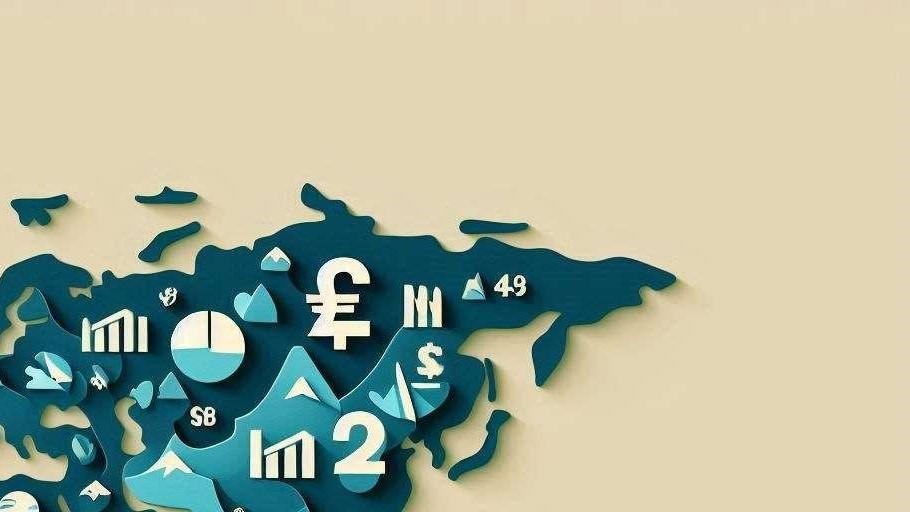
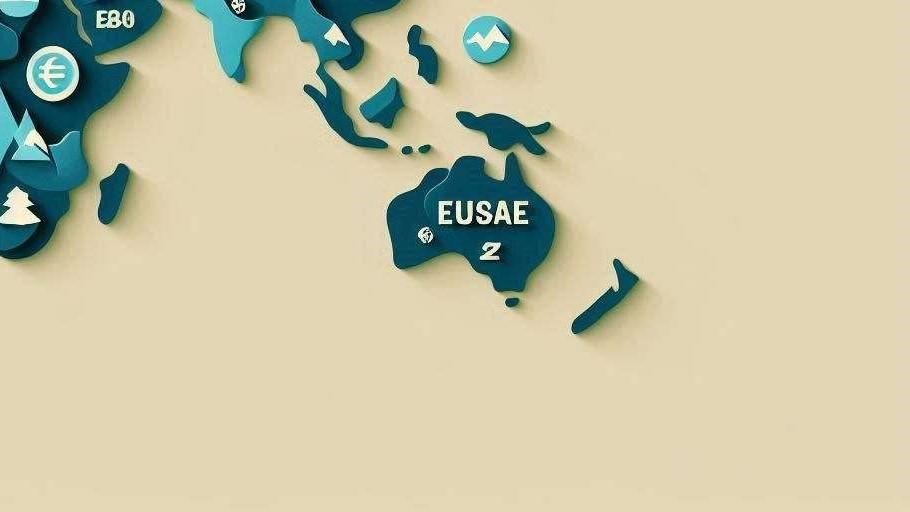
��ts-all”mindset,wouldexacerbatetheSouthern economies,reliantonforeignlending,whilstfailing toaddressthecauseofthein��ation,whichwas supplyside,ratherthandemandside.Many EuropeanbanksofwealthierEurozonecountries, suchasGermanyorFranceheldlargeamountsof SouthernEuropeandebt.Duetotheincreasein bondyields,themarketvalueofthesedebtassets plummeted,threateningtheir��nancialstability. ThisisillustratedthroughthecollapseofDexiain late2011,aFranco-Belgianbankwithheavy exposuretotheGreekandItaliandebtcrisis.





Incomparison,thecollapseofthe��xedexchange ratesoftheSoutheastAsianCountries,suchasthe BhatorRupiahwasthecauseofexcessiveshorttermborrowing,whichcumulatedtoalarge foreigndebt,combinedwiththeirweakbanking sectors,ledtothesocialunrestseeninIndonesia. Regionally,thecrisisdevastatesASEANeconomies throughmassivecurrencydevaluationsandledto thecollapseoftheRublein1998,andtheIMF responsepushedmillionsintopovertyinthe region.Internationally,theAFCledtothesmaller WallStreetcollapse,whichforcedaFED-bailout, andthe1999currencycrisisinBrazil.Incontrast, theEuropeanDebtCrisisworsenedtheregional inequalities,splittingthericherNorthernmembers fromtheSouth,highlightedbyGreecesufferinga youthunemploymentrateofaround33%. Internationally,itthreatenedthevalueoftheEuro, whichrequiredECBintervention,suchasthe “whateverittakes”intervention.Bothcrises highlightedthesocialcostsof��nancialinstability. InAsia,theeconomiccollapsesparkedviolentriots inIndonesia,thatendedSuharto’sdictatorship, whilstinEurope,theDebtcrisisfuelledtheriseof Syriza,Greece’santi-austerityparty,which opposedgovernmentspendingduringarecession. IntheJanuary2015elections,Syrizawon149 Parliamentaryseats;2shyfromanoutright majority,whichre��ectedwidespreadangerover theECB’simplementationsofausteritymeasures. However,theirrecoveriesalsocontrasted,with SoutheastAsiaabletoincreasetheirexport-led growth,toboosttheiraggregatedemandandit sawmostASEANeconomiesrecoveringtoprecrisislevelsbytheturnofthecentury.However, SouthernEuropesufferedfromadecadelong periodofstagnation,withtheGreekRealGDP growthsince2009,being16%lowerin comparisontothelevelssince2008.Therefore, theAsianFinancialCrisissuggeststhatcrisis responsesmusttaketheshort-termstabilityand long-termcompetitivenessintoaccount,whilstthe EuropeanDebtCrisisdemonstratesthedangersof anoncoherentmonetarypolicy,and��scalpolicy, wheretherecannotbea“onesize��tsall”solution, andthateachEurozonemember’seconomyneeds differentreforms

HarryL,Y12
BlackWednesday,the1992 SterlingCrisis
OnSeptember16,1992,theUnitedKingdomfaced aseismic��nancialcrisisthatwouldbe rememberedasBlackWednesday.Thisdaysaw theBritishpound'sabruptexitfromtheEuropean ExchangeRateMechanism(ERM),asystemaimed atstabilisingexchangeratesamongEuropean currencies.TheeventreshapedUKeconomic policy,tarnishedthegovernment'sreputation,and elevatedthein��uenceofcurrencyspeculators, mostnotablyGeorgeSoros.Thisarticledelvesinto thecauses,events,andlastingimpactsofBlack Wednesday,offeringaclearperspectiveona de��ningmomentineconomichistory.
TheERM,establishedin1979,wasacornerstone ofEuropeaneconomicintegration,designedto minimizeexchangeratevolatilitybypegging membercurrencieswithinanarrow��uctuation band.TheUKjoinedinOctober1990underPrime MinisterJohnMajor,��xingthepoundat2.95
DeutscheMarks(DM)witha±6%��uctuation range.ThemovewasintendedtocurbtheUK’s persistentin��ationandalignwithEurope’spush formonetaryunity.
However,thetimingwasunfavourable.TheUKwas grapplingwitharecessionandhighin��ation,while Germany,adominantERMmember,facedthe costsofreuni��cation.TheBundesbank’shigh interestrates,meanttocontrolGermanin��ation, strainedweakereconomiesliketheUK,which neededlowerratestospurgrowth.Thiseconomic mismatchsetthestageforthepound’sprecarious positionwithintheERM.
Bymid-1992,theERMshowedsignsofstrain.The poundtradedneartheloweredgeofitspermitted band,andspeculativepressureintensi��ed. Currencytraders,includinghedgefundmanager GeorgeSoros,betheavilythatthepoundwas overvaluedandunsustainableatitspeggedrate.
Severalfactorsfuelledthisscepticism.TheUK’s recessionwarrantedlowerinterestrates,butERM membershiprequiredhighratestodefendthe pound,sti��ingrecovery.Germany’shighrates strengthenedtheDeutscheMark,makingitharder forweakercurrencieslikethepoundtomaintain theirpegs.DisagreementsamongEuropeanleaders overmonetarypolicyweakenedtheUK government’scommitmenttotheERM,aspublic andpoliticalsupportwaned.Hedgefunds,ledby Soros’sQuantumFund,amassedmassiveshort positionsagainstthepound—reportedly$10 billion—anticipatingitsdevaluation.
ChancellorNormanLamontvowedtodefendthe pound’sERMpeg,signallingreadinesstoraise interestratesanddeployforeignreservesto counterspeculators.
BlackWednesdayunfoldedwithrelentlesspressure onthepound.Asmarketsopened,thepoundfaced intenseselling.TheBankofEnglandintervened, spendingbillionsinforeignreservestobuypounds andbolsteritsvalue.Todeterspeculators,the governmentraisedinterestratesfrom10%to12% earlyintheday.Whenthisfailed,asecondhiketo 15%wasannounced—anunprecedentedmove. Despitetheseefforts,thepoundcontinueditsslide towardtheERM’slowerlimit.Speculators,sensing weakness,intensi��edtheirselling.Byevening,with reservesnearlydepletedandthepoundstill falling,ChancellorLamontannouncedtheUK’s withdrawalfromtheERM.Thepoundwasallowed to��oat,resultinginanimmediatedevaluation.
TheBankofEnglandreportedlyspent£3.3billion inreservestonoavail.GeorgeSoros,dubbed“the manwhobroketheBankofEngland,”earnedan estimated$1billioninpro��ts.Theaftermathof BlackWednesdaywassigni��cant:Thepound’s devaluationbyroughly15%madeUKexports morecompetitivebutraisedin��ationandimport costs,affectingconsumers.JohnMajor’s Conservativegovernmentsufferedasevereblow toitsreputation,contributingtoitslandslide defeatinthe1997election.FreedfromtheERM, theUKadopteda��exiblemonetarypolicy, graduallyloweringinterestratestoaidrecovery. ThecrisisalsowasafactorintheBankof England’sindependencein1997.
BlackWednesdayleftalastingmarkontheUKand global��nance.Thecrisisfuelleddoubtsabout Europeanmonetaryintegration,in��uencingthe UK’sdecisiontooptoutoftheEuroandservingas atouchstoneforEurosceptics.Theevent highlightedthepowerofhedgefundsand speculators,exposingthefragilityof��xed exchangeratesystems.Thecrisisrevealedthe ERM’sinabilitytoaccommodatedivergent economies.TheItalianlira’sexitin1992further weakenedthesystem,pavingthewayforreforms leadingtotheEuroin1999.
BlackWednesdayhighlightedthechallengesof maintaining��xedexchangeratesinaglobalized economy.Itshowedthatmarketforcescan overpowerevenwell-resourcedgovernmentswhen economicfundamentalsaremisaligned.FortheUK, thecrisiswasapainfulbutcruciallessonin prioritizingdomesticeconomicneedsoverrigid internationalcommitments.
BlackWednesdayremainsalandmarkineconomic history,illustratingtheperilsofmisaligned monetarypoliciesandthepowerof��nancial markets.Whileitbroughtimmediatehardship,it alsosetthestageforamoreresilientUK economy.ThelegacyofSeptember16,1992, continuestoinformdebatesonmonetarypolicy, Europeanintegration,andthedynamicsofglobal ��nance. CameronR,Y12
TheCrisisof Overconsumption:How BusinessesAreFuelling
Buyer’sRemorse
Youjustboughtanewphone.Minuteslater,a noti��cationpopsup“Customerswhoboughtthis alsopurchasedtheseaccessories.”Youclick,you spend,andbytheendoftheday,yourbudgetis blownandyourbankaccount’scrying.Thisfamiliar scenarioisahallmarkofmodernecommerce.We liveinanerawhereconsumerspendingis frictionless,impulsive,andoftenaddictive.Butthis isn’taccidental-it’sbydesign.
Asbusinessesperfecttheartofupsellingand personalization,consumersareleftgrowthbuyer’s remorseanddebt.Isthisclevermarketingan emergingcrisis?Thisreportdelvesintohow strategicbusinessdesignsactivelyfuel overconsumptionanditssigni��cantpersonaland economicconsequences.
-the-wheeldiscounts,countdowntimers,and exclusive��ashsales-thatmimicaddictivereward cycles.Theseplatformsutilisethesameconceptas betting/gambling,promotingimpulsivebuying behaviourevenforitemsconsumerdoesn'ttruly needinreality.
Modernbusinessesleveragedeeppsychological insightstostimulatepurchasing,transformingthe actofbuyingintoanunconsciousdrive.Ecommerce hasbecomeatestinggroundforperfectingthese techniques,makinginnovationfasterandfaster.
Purchasingisdeeplyconnectedwithdopamine,a neurotransmitterassociatedwithmomentswhen rewardandpleasureishigh.Critically,dopamineis releasednotjustuponreceivingareward,butin theanticipationofit-adynamicheavilyexploited inonlineshopping.Thedelaybetweenorderand deliverymaximizesdopaminespikes,keeping consumersengagedandcravingtheeventual oftheiritem.
Theuseofscarcityandurgencytechniquestrigger lossaversion,wherethefearofmissingout overtakesrationaldecision-making.Examples include,“Only2left!”and“Buyinthenext15 minutes.”Thesetacticsincreasesalesbyleadingto emotionalandimpulsivepurchasesthatmany consumerslaterregret.
Moreover,businessescapitaliseonthecriticalpostpurchasewindowwhentrustanddopaminelevels
Thisisnoaccident.PlatformslikeTemuandTikTok Shopintegrategami��edshoppingexperiences
peak.Atthismoment,consumersarehighly receptivetoadditionaloffers,especiallywhen presentedas"logicaladd-ons."Withone-click upsellsandinstant-paymentoptions,companies ensurethispsychologicalmomentumcontinues uninterrupted,keepingconsumersinacontinuous loop.
Businesseshaveremovedfrictionfromthebuying processitselfthroughinnovationslikeone-click purchasesandbiometricauthentication,making transactionprocesseasierthanever,boosting websiteconversionratesandreinforcingthehabit ofspontaneousbuyingforconsumers.
BuyNow,PayLater(BNPL)serviceslikeKlarnaand Afterpayfurtherhighlightthisissue,byreducing theinitialupfrontcost,theycreatetheillusionof affordability,leadingconsumerstospendmorethan theyotherwisewouldhavewhenvisitingthe website.TheaverageBNPLorderis18%largerthan traditionalpurchases.Thisdeferred-paymentmodel isparticularlyappealingtoyoungerconsumers,who maynotfullygraspthelong-termconsequencesof stackingmultiplerepayments.
Theresultiswhatsomecall“phantomdebt”,which are��nancialobligationsthataren'timmediatelyfelt orre��ectedintraditionalcreditscoresbutinstead accumulateinthebackgroundwithoutreal attention.Thedangerofthisisconsumers eventuallyrunningoutofmoney,increasingdebt andthepopulationbecoming��nanciallyfragile.
theitems.Around45%keeptheunwanted products,eitheroutofguilt,convenience,or perceivedobligation.
IntheUK,BNPLusagehassurged,withover42% ofadultsusingitasof2025.Alarmingly,more than10millionpeoplepaidalatefeein2023,and oneinfouryoungadultsarenowin��nancial dif��culty.Thelackofregulationaroundthese services,untilrecently,allowedprovidersto sidesteprigorousaffordabilitychecks,worsening thedebtcrisis.
Despitethiscrisis,somecompaniesareprovingthat ethicalbusinesscanbegoodbusinessand pro��table.Patagoniafamouslylauncheda“Don’t BuyThisJacket”tohighlighttheenvironmental costofconsumerismontheplanetandclimate change.Themoveaccidentlyboostedtheirsalesby justover30%,provingthatauthenticityand emotionalmarketingcanbuildloyaltyfarmore powerfullythanpricedropscould.
tmorefromreplacementthan fromdurability.Fastfashionandconsumertech exemplifythisstrategy.Someproductsareoften manufacturedintentionallywithlimitedlifespans, replaceablebatteriespushing consumersintobuyingnewermodelsfasterdueto theproductqualitydecreasingovertime.
Brandscerti��edasBCorporations-whichbalance pro��twithpurpose-aregainingpopularity.Young consumersandstudentsareshowingawillingness topaymoreforproductsthatre��ecttheirvalues. A2024Nielsensurveyfoundthat73%ofglobal consumerspreferbrandsthatareenvironmentally responsibleandsociallyconscious,thenonesthat aren’t.
Toconclude,overconsumptionisnotjusta symptomofpersonalirresponsibilitytherefore,it’s abusinessstrategywhichhasbeencarefully designed.Fromalgorithmicupsellstofrictionless BNPLservices,companieshavebuiltecosystems thatencourageimpulsive,continuousspending. Whilethesetacticsdriverevenue,theyoften undermineconsumerwell-being,��nancialstability, andmentalhealth,leadingtoadangerouscrisis
A2023SimplicityDXsurveyfoundthatnearlyhalf ofonlineshoppersmadeimpulsepurchases,and 56%regrettedthem.Manycitedreasonssuchas buyingitemstheydidn’tneedoractingon emotionalimpulsestriggeredbydigitalnudges. Despitetheseregrets,manyconsumersdon’treturn
EvanJ,Y12
EconomicWarfareThrough Terrorism:Analysingthe EconomicImpactofthe2025 KashmirCrisis
TheterroristattackinPahalgamonApril22, 2025,servesasaquintessentialexampleof economicwarfaremaskedasreligiousextremism. Inadditiontothetragiclossof26lives,this operation,supportedbyPakistan,wasintentionally plannedtocausesigni��cantharmtoIndia's economicframework,primarilyfocusingonthe tourismindustry,whichaddsroughly₹2.4trillion eachyeartoIndia'sGDP.
• Currencydepreciation:2.1%againstUSD (withinRBIcomfortzone)
• Bondyieldspread:Increasedby15basis pointsbeforenormalising
India'sdefencebudgetallocationof₹6.81trillion forFY2025-26representsastrategicinvestment withsigni��cantpositiveexternalities.Thedefence expendituremultiplierinIndia'seconomyis estimatedtobeat1.4x.
TheattackinPahalgam,whichspeci��callytargeted Hindutourists,wasastrategicmovedesignedto disruptKashmir'stourismsector.Inthefollowing month,theregionfacedimmediatecancellationsof bookingsamountingtoaround₹8,500crores, withhoteloccupancyplungingfrom85%to23% injusttwoweeks.Thisnegativemultipliereffect alsoimpactslocalhandicrafts,transportation,and hospitalityservices,resultinginapproximately 180,000joblossesintheKashmirValley.
India's��nancialmarketsshowcasedimpressive systemicstrengthamidstthecrisis.Theinitial declineinmarketcapitalisationof₹4.2trillionon April30bouncedbackwithineighttrading sessions,re��ectingcon��denceamongstinvestors.
• Employmentgeneration:2.8milliondirect andindirectjobs
• Exportpotential:₹21,000croresindefence exportsby2026
• Industrialcapacity:40%increasein domesticdefencemanufacturing
Despitethecrisis,India'scurrentaccountde��cit remainedstableat1.3%ofGDP,wellwithin sustainablelimits.Theservicestradesurplusof $156billionprovidedcrucialbalanceofpayments support.TheReserveBankofIndia'sin��ation targetingframeworkprovedeffective,withcore in��ationremaininganchoredat3.8%.
• Creditgrowth:11.2%year-on-year
• Sensexvolatility:2.3%(comparedto4.7% duringthe2019Balakotcrisis)
• Governmentbondyields:10-yearyield stabilisedat7.1%
• ComparativeEconomicVulnerability:India vs.Pakistan
Pakistan'sdebt-to-GDPratioof89.2%compared toIndia's57.1%highlightsthestarkdifference in ��scalsustainability.Pakistan'sforeignexchange reservesof$9.1billion(enoughtocover1.5 monthsofimports)versusIndia's$650billion (enoughtocover11months)demonstratesthe asymmetriceconomiccapacityforsustained con��ict.
• GDPpercapita:India($2,612)vsPakistan ($1,596)
• Forexreserves/GDP:India(18.2%)vs Pakistan(2.4%)
• Currentaccountde��cit:India(-1.3%)vs Pakistan(-4.1%)
Pakistan'seconomicterrorismstrategyre��ectsits inabilitytocompetethroughlegitimateeconomic means,butthereputationalcostsandinternational sanctionscreatenegativenetpresentvaluefor Pakistan'seconomy.
India'slong-termprospectsdespitetemporary securityshocks.
Thegovernment'scounter-cyclical��scalpolicy duringthecrisisincluded:
• Emergencytourismsupportpackage: ₹15,000crores
• Defenceinfrastructureacceleration: ₹25,000croresadditionalallocation
• Borderareadevelopment:₹8,500crores foreconomicintegration
Thepolicymixofaccommodativemonetarypolicy andtargeted��scalsupportcreatedoptimal macroeconomicstabilisationwitha��scalmultiplier of1.6timesfordefenceandinfrastructure spending.
India'spotentialGDPgrowthof6.8%remains intactdespitesecuritychallenges,supportedby:
• DemographicDividend:Working-age populationgrowthproviding0.8percentage pointsofGDPgrowth
• DigitalInfrastructure:Digitaleconomy contributionexpectedtoreach20%ofGDP by2026
• ManufacturingRenaissance:Production LinkedIncentiveschemestargeting$520 billioninmanufacturingoutputby2027
ForeignDirectInvestment��owsof$83.5billionin FY2024-25demonstrate investorcon��dencein
The2025KashmircrisisdemonstratedthatIndia's economicfundamentalshaveevolvedintoa strategicasset.Theeconomy'sabilitytoabsorb externalshockswhilemaintainingitsgrowth momentumre��ectsthesuccessofitsstructural reforms.Pakistan'sresorttoasymmetriceconomic warfarethroughterrorismrevealsitsrecognition ofIndia'sconventionaleconomicsuperiority.Still, thediminishingreturnstoterroristtactics, combinedwithIndia'sgrowingeconomicresilience, suggestPakistan'sstrategyisbecoming counterproductive.India'strajectorytowarda$7 trillioneconomyby2030remainsintact, positioningitasthedominantregionaleconomic power.
AskvikG,Y12
Caneconomicsbe usedinwarfare? Aninsightinto OperationBernhard
OperationBernhardwasaformofeconomic warfareusedbytheNazi’sinWorldWarTwoto destabilisetheBritisheconomy.Originally,itwas namedoperationAndreasandoccurredin 1940.Theinitialplanwastodropforgedbank notesoverBritain,causinghyperin��ation, destroyingthesterlingasaworldcurrency, makingithardertotradesuppliesand��ghtawar. However,itendedin1942whenitsheadAlfred Naujocksfelloutoffavourwithhissuperiorof��cer Heydrichwithnonotesbeendistributed.The operationwashoweverrevivedlaterbutthe intentionhadchanged,SSMajorBernhardKruger wastaskedwithforgingbanknoteswhichcouldbe usedto��nancetheGermanwareffort,notably £100,000fromthisoperationwasusedtoobtain informationthatsetItalianleaderBenitoMussolini free,andtheypurchasedgoldto��nancethewar. TheintentionchangedastheLuftwaffehadtaken ahugelossinnumbersandthuswantedtofocus thelimitedresourcestheyhadonbombingBritain andnotbombingtheeconomy.


TheBritishBanknotesweremadefromwhiterag paperandblackprinting.TheBankofEnglandhad apparentlybeentippedoffaboutthescheme howeverwerecon��dent(probablyovercon��dent whenconsideredthebanknoteshadhardly changedsince1855)thatthenotescouldnotbe forgedduetosecuritymeasures.Theseincluded 150minormarks,thevignetteofBritanniaaswell asthesignatureofthechiefcashieroftheBankof England,analphanumericserialdesignation,and paperwhichhadthenocellulose.Tobreakthe


serialdesignationtheNazi’semployedbanking expertstoexaminerecordsofcurrencyandtryto replicatetheorder.Likelythehardestpartwas reproducingtheVignetteofBritannia,whichisin theboxbelow,theynicknameditthe‘’bloody Britannia’’asitwassodif��cultandsourcesstill criticisetheeyesweren’tright.Theforgerywasso precisethattheGermanscreatedwaterofthe samechemicalbalanceasBritishwater,aswhen doneinGermanwaterthepaperlookedidenticalin normallightbuttoodullinUV.Thenoteswere createdbyconcentrationcampprisoners,some Jewish,whowereskilledincraftsmanship, engraving,printingandbanking.Theprisonersnow hadelevatedlivingconditions,withaccessto cigarettes,radios,newspapers,apingpongtable andextrarations.Theunitcreatedanestimateof around£132millioninbanknotes(around5bn today)with140prisonersworkingtwotwelvehournonstopshifts.Thishighlightsthespeed,skill andexpertisethatwentintomakingsomeofthe bestforgedmoneyevermadetothisday.Some saythattheyeventriedworkingslowlysothey weren’tkilledafteritwasmade,andtheleader didn’twanttoreturntothefrontline.Atthepeak ofproductioninmid1943-44approximately 65,000noteswereproducedamonth.Inorderto furtherensurethereliabilityofthenotes,40to 50prisonersstoodintwocolumnspassingthe




notesbetweeneachother,folding,pinningcorners, writingBritishnamesandaddressesonthe reverse,addingdirt,sweat,andgeneralwearand teartopassthemoffasreplicas.Thebestreplicas, grade1,wereusedinneutralcountriesbyNazi spies,Grade2wereusedtopaycollaborators, grade3weresavedtopossiblydropoverBritain andGrade4weren’tgoodenoughtobeused.The Naziauthoritiesweresopleasedwiththese replicastheyawarded12prisoners-3Jewish,war meritmedals.SomesuspecttheuseofJewish prisonerswastohelpdisguisethemasrealnotes asJewishpeoplewouldn’tbeworkingwiththe German’sthusshouldn’thavethefakemoney improvingitsreliability.
Theeconomyisacrucialpartof��ghtingawar,if thegovernmentcan’t��nanceit,thecountrycan’t ��ghtit.InthecaseofoperationBernhard,itis confusedwhetherthismethodcanbeusedto��ght awar.Apparently,ChurchillandRoosevelthad alsoconsidereddoingsomethingliketheGerman’s butthoughtagainstitasitseemedlikeawaste. ThissentimentwasevensharedwithintheNazi’s whentheplanwasproposedReinhardHeydricha superiorof��cerheadofthepolicelikeditbutwas worriedaboutusingcriminalstodoit.Joseph GoebbelstheReichMinisterofPropagandacalledit
‘’agrotesqueplan’’andWaltherFunk,theReich MinisterofEconomicaffairs,wasworrieditwould breachinternationallaw.ItwasAdolfHitlerwho gavethe��nalapprovalforittoproceed.The operationwaslikelyquite��awedwhenconsidered theamountoftimeandresourcesthatwere distractedfromthewarefforttomakethese notes,butitislikelyconsideredasuccessasthe noteswereused.Perhapsthetoday’sequivalent wouldbecybersecurityandhackingbank accounts,��llingthemwithmoneycreating hyperin��ation.Thehopewouldbepeoplewouldn’t spendthemoneysothegovernmentcantakeit outofcirculationbutinreality,whoknowswhat wouldhappen.Otherexamplesofeconomicsused inwarfare,couldbeablockadecausingcountries tonotbeabletotradeorgetsuppliessothey cannot��ghtawar,theGermanstriedthisbyU boatingshipstoEngland.Otherexamplescould bedestroyingsupplyoffoods,orsupplylinesso resourcescan’tbereceived,expropriation(seizing privatepropertyforpublicinteresthappenedwith ChelseaFCinRusso-Ukrainewar).
Theprisonerswereveryluckynottobekilledas thecampwasliberatedbyUSforces,theleaders werenotchargedforawarcrimeforforging enemycurrencyandinsteadwereaskedbythe
Frenchtohelpthemforgepassports(they refused).ManyofthenoteswerethrownintoLake Toplitzandsincetherehavebeenmanysearches forthem.Sincebankexpertshavenamedthe
forgeries‘’themostdangerouseverseen’.Itis estimatedaround£15-20millionwereingeneral circulationbytheendofthewar.Asaresultof thisfromApril1943theBoEstoppedreleasingall notesabove£10andinFebruary1957anew£5 notewasreleased,February1964£10,July1970 £20,March1981£50.Hadthesecurrenciesbeen releasedtheBritisheconomywouldhaveswirled intoturmoil.Theamountproducedwasaround 15%ofallnotesincirculation,morethantheBoE hadinreserve.Anincreaseinthemoneysupply allowsformoremoneytochasethesamenumber ofgoods.Thismeansthatpeoplewillpayhigher pricesforthesamegoodasdemandhasincreased.

Thislargeincreaseinmoneysupplywouldhave causedhyperin��ation.Thiswoulderodethe purchasingpowerofthesterlingmakingtrade dif��cult,awarharderto��ghtandcouldhavewon Germanythewar.Thiscanbeshownthroughthe FisherEquationofExchangewhereMV=PQwhere m=moneysupply,v=velocityofmoney,p= Generalpricelevel,Q=RealGDP.Thisexplainsthat in��ationisdrivenbymoneysupplyincreases assumingVandQareconstant,andthus OperationBernhardincreasingthemoneysupply shouldresultinin��ation.
The1973OPECOilEmbargo: Causes,Crisis,and
Consequences
The1973energycrisis,alsoknownastheOilShock of1973-74,wasasigni��canteconomiccrisis,with seriousinternationalconsequences.Itwasaperiod whereoilpricesskyrocketedduetoanembargo placedontheUnitedStatesanditsWesternallies byOPECcountries.Theembargowasliftedthe followingyear;however,itsconsequenceswerefelt severelyacrosstheglobaleconomy,intheformof adecadeofhighunemploymentandstag��ation duringthe1970s
Theprimarytriggerofthe1973Oilembargowas theYomKippurWar.Thiswasasurpriseattackby Egypt,JordanandSyriaagainstIsrael,inan attempttoregainlostterritoriesfromthe1967Six DayWar.Inresponse,thenPresidentRichardNixon decidedtoprovideIsraelwith$2.2billionin emergencyaid,whileotherWesternalliesalso providedmilitaryandlogisticalsupporttoIsrael. ThisdeeplyangeredtheoilproducingArabnations intheMiddleEast,whosawIsraelastheir ideologicalenemy.DuetotheirhelpofIsrael,the ArabmembersoftheOPEC(Organisationof PetroleumExportingCountries),ledbyKingFaisal ofSaudiArabia,implementedatotaloilembargo ontheUnitedStatesonOctober17th,whichwas laterextendedtootherWesternallies.Atthesame time,byDecember1973OPECmembershad dramaticallycutproductionlevelsto25%ofwhat theywereinSeptember,aswellasraisingtheprice ofoil.Thiswasthe��rsttimethatoilhadbeen properlyusedbyArabOPECcountriesasapolitical
LukeF,Y12
weapon,highlightingthegrowingpowerthatOPEC countrieshadoverforeigneconomies.Oilproducing countriesalsosawtheembargoasadisplayof economicnationalism.Thesecountrieshadlongfelt thattheywerebeingexploitedbyWesternoil companies,knownasthe‘SevenSisters,’andsaw theembargoasawayinwhichtotakebackcontrol oftheirownresourcesandobtainmorein��uence concerningoilprices.
Inthefollowingmonthsaftertheembargo,there waschaosacrossWesterncountrieswhoimported signi��cantquantitiesofoil.Beforetheembargo,a barrelofoilwassellingforabout$2.90.By January1974,priceshadquadrupledto$11.65per barrel.Westerneconomiesthatwereheavilyreliant oncheapimportedoilfromtheMiddleEastwere hitthehardest.IntheUnitedStates,thepriceof regulargasolinerosebyaround36%inlessthana year,coupledwithgasshortagesandrationing whichledtolongqueuesatgasstations.Japan,in particularwashardhit,havingimportedsome90% oftheiroilfromtheMiddleEast,andevenhadto cutbackonnonessentialautomobileusageto preserveitsstockpile.
Theeconomicimpactswerejustassevere.Across thedevelopedworld,in��ationsurgedduetothe higheroilprices.Anewconceptof‘stag��ation’ occurred,asrisingpricescorrespondedwith stagnatinggrowth.Industrialproductionslowed, unemploymentrose,andbusinesscon��dence plummetedduringtherecessionthatfollowed. By 1980,Japan’sunemploymentrate,whichhad averaged1.0percentfrom1960to1978,was13.5 percent;forFranceandtheUnitedStates,the1980 ��gurewas15percent;fortheUnitedKingdom,23 percentasdisruptionsfromtheshockwerefelt acrosstheglobe.
Thecrisisrevealedtotheworldthevulnerabilityof manyoftheworldsmostdevelopedeconomiesto importedoil.However,forOPECcountries,the crisisthatfollowedtheembargoshowcasedthe powerheldbyMiddleEasternoilproducing countriestosubstantiallyimpacttheglobal economy,somethingpreviouslythoughtofas inconceivablefordevelopingcountries.Thiscreated
ashiftinglobalpowerdynamicswithOPEC emergingasapowerfuleconomicblockthat demandedrespectandrevampedforeignpolicy.
Inaddition,thecrisissparkedchangesfrom Westerngovernmentsregardingenergypolicy.It wasclearthatitwasnolongersafetorelypurely onMiddleEasternoil,andgovernmentsinvestedin alternativeenergysources,moreenergyef��cient manufacturingandproductsandstrategicenergy reserves.In1977,theUScreatedtheDepartment ofEnergytooverseethesechanges,whilesimilar changeswereenactedinEuropeandJapanas energybecameamuchmoreimportantfocusfor countries.
Economically,theoilcrisiscontributedtoa prolongedperiodofinstabilitythathadnotbeen seensinceWW2.CentralBanksstruggledto respondeffectivelytoacombinationofbothhigh in��ationandlowgrowth,asalteringtheBankrate wouldbene��tonesideandhindertheother.This startedthebeginningsofre-evaluationofeconomic policyframeworks,asKeynesianeconomicsfellout offashionandMonetarismbrie��yroseto prominence.Theperiodofstag��ationalso challengedthelong-heldbeliefthathigher unemploymentandeconomicrecessionswouldbe metwithlowerin��ation,asthe1970speriod provedthatthisconcept,andthePhillipscurve, wasnotguaranteed.
The1973OPECOilEmbargowasn’tjusta temporarydisruptioninsupply.Itwasaseismic event,onethatredeterminedtheglobalorder, contributedtoadecadeofeconomichardshipthat interruptedaperiodofunprecedentedprosperityin theWest,andexposedthevulnerabilityand dependenceofsomewesterncountriestoMiddle Easternoil.Duetothecrisis,governmentswere forcedtorethinkglobalrelations,diversifytheir energysourcesandaltereconomicpolicy.Moreso, itservesasareminderofthepowerthatcountries whohaveresourceshold,inaworldmore interconnectedthanever.
DylanS,Y12
Lostimagination: Thebackpedallingof innovationandthenewfound over-relianceonwhathas worked
Acrosstheextensivelifespanofeconomics, innovationhasmostfrequentlythrivedatthe crossroadsofbothnecessityandimagination.This behaviourcanbetracedasfarbackastoperiods suchastheRenaissance,whereinventorswere constantlysearchingfornewanswerstopreviously solvedquestions.Ground-breakingdiscoveriesand inventionshaveremouldedtheinterworkingof entireindustries,creatednewmarkets,andpushed societyforward,yet,inmorerecentdecades,a worrisometrendhasemerged.Atrendthat,atits core,prioritisesre��nementoverreinvention.
aversiontofacingriskshownbymodernday businesses,thepopularityofnewAItechnologyand itsinnovativenaturefordecisionmakinghascaused avastshiftinbusinesses,previouslyboundbythe pressuresofshort-termpro��tability.Companies wouldnowprefertoreapthesaferbene��tsof adoptingAIintoexistingframeworkratherthanthe riskierbreak-and-reworkstrategiesofgrowth.
Theleaderofthislatesttrendisfoundinthe increaseinthedependencyonarti��cialintelligence anditsdata-drivendecisionmaking.Whilstparading ef��ciency,itinadvertentlysuffocatescreativityby beingdesignedtoextrapolateinformationfrom provenmodels,asopposedtoexploringnewer, potentiallyriskieralternatives.Withtheincreasing
AI,however,mayinfactbedetrimentaltolongterminnovation.Thoughseeminglymoreoptimalin termsofguaranteedgrowth,bycreatinganoverrelianceonpastwinsweclosethedoorsto discoverparadigm-shiftingadvancements.
Theeconomicconceptofcreativedestructionisthe historicaldriverofinnovation.Thecycle,ofwhich outdatedindustriesarebrokendowntomakeway formorecutting-edgeones,hasinfamouslypaved technologicalprogressforcenturies.Mechanical carstakingoverthehorse-drawncarriages,digital
streamingofmusicand��lmhaserasedphysical media,andpersonalcomputingrevolutionised paper-basedworkplaces.
Today’seconomiclandscape,however,isfarmore cautious.
recommendsthatthelikelihoodofchoosing unconventionalapproacheswhichcouldspur otherwisesurprisingeconomicgrowthwouldbe reduced.
Largely,ourcurrentstartupeconomycentralises ensuringpredictablereturns.Establishedcompanies haveshiftedprioritiestopro��tabilityoverresearch anddevelopment,whichisslowlyerasinghigh-risk, high-rewarddevelopment.
Oneoftheclearexamplesofthistrendof behaviourliesinstockbuybacks.Insteadof investingrevenuesintoresearchwiththepotential ofyieldingpioneeringpotential,leading corporationsandmonopolieshaveinstead designatedincrediblesumsoftheirowncapitalinto repurchasingtheirownshares,astrategythatholds sound��nancialstability,butperhaps,creatively unambitious.Google,notably,leadstock-buybacks in2024byrepurchasing$46.7bnoftheirown shares.Trendssuchasthisincreasedincentiveto playitsafeintheeconomyre��ectsthebroader shiftintheprioritiesofcorporations:minimisingrisk andmaximisingpro��tability.Firmswillrather reinforcetheiralreadyexistingmarketdominance insteadofventuringtheunchartedterritoryofrisky decisionmaking.
Anotherfactorthatisin��uencingtherisk-averse innovationisthebehaviourofconsumers themselves.Togaugethepreferencesof consumers,companiesnowheavilyrelyonthe analysisofcurrentmarketdemand,creatinga positivefeedbackloopwhereoffersarecateredto familiardemand,andtomimicpopularproductsor servicesthatconsumersareproventoengagewith insteadofseekingnewpossibilities.Thisis especiallynoticeableofathemeinthe entertainmentindustry.Hollywood,renownedonce asapoolofnew,excitingideas,nowmajorly favourssequels,rebootsandfranchisesovermore originalstorytelling,thusensuringastableamount ofrevenuefromprojects.Similarly,companiessuch asApplehaveplannedcyclesofincremental softwareimprovementratherthanreleasing entirelynewparadigms.Furtherstill,algorithms basedonrecommendationonplatformssuchas Amazon,SpotifyandNet��ixfunnelusers'content thatreinforcestheirexistingtastestobettertempt engagement.Asaresult,marketdynamicsshift towardtheoptimisationofpro��tablemodels.




Theintegrationofarti��cialintelligenceintoour everyday,regardedasthelatestinnovationasa tooldesignedforourprogress,paradoxically contributestothesteadydeteriorationofour originality.Deeplearningalgorithmsaredesignedto dissectpatternsfromexistingsources,meaningthe outputswillbeintrinsicallyconstrainedbywhathas alreadybeendone.Generatedliterature,musicand evenartworkshadowpastpreferencesandstyles, repeatingfamiliaraestheticsinsteadofpioneering newones.Inasimilarsense,in��nancialmarkets, investmentstrategiesdrivenbyAIfavourstable assetssuchasinfrastructureorcommodities.
Whilsttheef��ciencyofarti��cialre��nementgrants ustheopportunityofguaranteedeconomic stability,itpromptsanimportantquestion:canwe trulycallprogressmeaningfulifitcallson repeatingpastsuccesses?Theveryfutureof innovationinnotonlyoureconomy,butourworld, isnotmerelydependantonoursocietalsystems;it alsoasksforacollectivepushtoembrace originalityinourideas.Ifwecontinuetosolely re��newhathasworkedbefore,weultimately jeopardisethehonestyandintegrityofprogress. Equally,weriskstagnatinginacycleofimitation ratherthansparkinginspirationforfuture advancements.
WillJ,Y12
Worryingly,governmentsandcentralbanksare showcasinganincreasingrelianceonalgorithmic modelstoguidepolicy-making,whichcouldbea gravepathwayfordecisionmakinginwhich��scal decisionsaresoheavilyimpairedbywhatthepast
TheEconomicsof Division:HowInequality FuelsCon��ict
Ineconomics,inequalityreferstotheuneven distributionofincome,wealth,oropportunities amongindividualsorgroupswithinasociety.In recentyearstheconversationaroundinequality hasshiftedfromthemarginstomainstream.As theglobalwealthgapwidens,thefalloutisno longerthatoftheory;itseconomiccon��ict, politicalinstabilityandapotentialthreattothe longtermfunctionalityofcapitalism.
Sincethe1980s,economicinequalityhasgrownin nearlyeveryregionoftheworld.Accordingtothe WorldInequalityDatabase,thetop1%ofearners captured38%ofglobalwealthgrowthbetween 1995and2021,whilethebottom50%sawjust 2%.These��guresaren’tjustabstract–they representastructuralshiftinhoweconomies allocateresources.Thischangewasinnosmall partduetoapoliticalshifthighlightedduringthe Reagan-Thatchertohaveamarketfocused economy.The1980’ssawanemphasisonfree markets,deregulationandtaxcutsforthewealthy –thedecreasingprogressivetaxsystemcaused thegapbetweentherichandthepoorto increase.
economicinequalitytosocialandpolitical instability.A2019InternationalMonetaryFund (IMF)reportfoundthatinequalitysigni��cantly correlateswithhigherlevelsofunrest,particularly wheninequalityisbothvisibleandpersistent.In countrieswhereupwardmobilityislimited, disparitiesinwealthandincomeareoften interpretednotasnaturalmarketoutcomes,butas symptomsofariggedsystem.Thisunrestcanbe seenhistoricallywiththe“giletsjaunes”(yellow vests)proteststhateruptedin2018weresparked byafueltaxwhichwasreceivedasataxaimedat marginalisingworkingclasscitizens.Similarlythe ArabSpringuprisingswerestarteddueto economicdesperationandjoblessnessamong youth.
Thereisgrowingempiricalevidenceconnecting
Inequalitydoesn’tjustfuelstreetprotests;it corrodesinstitutions.Aswealthbecomes concentratedinfewerhands,sotoodoespolitical in��uence.Policiesincreasinglyre��ecttheinterests oftheelite.Thisdestroyedthelegitimacyof democraticinstitutionsandmakesworsethe dividesthattheseinstitutionsweremadetobridge. Moreover,highinequalitytendstoreducethe effectivenessof��scalpolicy.Researchbythe OECDshowsthatinunequalsocieties,public supportfortaxationandredistributiondecreases,


evenforthosethatwouldbene��tfromit.This resultsinafeedbackloop:inequalityleadsto politicalcapture,whichleadstofurtherinequality. Beyondthesocialimplications,inequalityisalso badfortheeconomy.AstudybytheIMFfoundthat countrieswithlowerincomeinequalityexperienced longerperiodsofsustainedgrowth.Thisisbecause whenwealthisconcentrated,consumption stagnates–sincethewealthytendtosavemoreof theirincomethanthepoor.Thisleadstoan underutilisationoftheeconomiccapacityanda negativeoutputgap.Additionally,inequality distortslabourmarketsandresultsinareductionof productivity.Talentissquanderedwhenaccessto goodeducationisamatteroftheschoolingyoucan afford–highlightedbythe2019collegeadmissions scandalwhereWilliamSingerpaidforhighschool studentstotakethe‘sidedoor’intoIvyLeague schools.
wealthtaxorincreaseinheritancetax,whichcan rebalancepublicrevenueswithoutstopping innovation.
:Directingfundstoward education,healthcare,andinfrastructurenotonly improvessocialoutcomesbutalsoenhances productivityandlaborforceparticipation.
:Raisingminimumwages, promotingunionisationcanhelprestorebargaining powertoworkers.
Tacklingmonopolisticpractices andrent-seekingbehaviourcanreduceexcess pro��tsthatfuelinequalityandslowinnovation.
Thereisnosimplesolutiontoinequality,butthere areseveralwaystoreduceit.
:Byclosingtaxloopholes anddevelopingaprogressivetaxsystemwecan
ThomasPikettyoncewrote,“Wheninequalityistoo great,theideaofmeritocracybecomesamyth.”In today’sworldwherebillionairescanaccumulate morewealthinaweekthanmanydoinalifetime, thismythisbecominghardertosustain.The inequalityweexperiencetodayisrepresentedasa politicalandeconomicdivideinsocieties.Thisdivide mustbeaddressedinthefuturetosustain capitalismandthelifewecanenjoytoday.
MikaM,Y12
DoesChina’sBeltandRoad Initiativespelltroublefor associatedcountries?
Sinceitslaunchin2013,China’sBeltandRoad Initiative(BRI)hasbecomeacentralforceinglobal infrastructuredevelopment.Focusingonsixmain economiccorridorsofwhichtheChina-Pakistan EconomicCorridorandNewEurasianLandBridge arethemostdeveloped,itspansover150 countries,encompassinginvestmentsintransport, energy,telecommunications,anddigitalsystems. Formanydevelopingnations,theBRIhashelped
��llachronicinfrastructure��nancinggapespecially inAsiawhereithasbeenestimatedthat$900bn ofinfrastructureinvestmentisrequiredannually forthenextdecade,notjusttraditionalareassuch astransportationandsanitationbutalsorenewable energyandmakingstridesdigitallyaswell.But alongsideitsreachandambition,theinitiativehas provokedgrowingscrutinyoverdebtrisks, geopoliticalin��uence,andgovernancestandards.
Atitsheart,theBRIisaboutconnectivity.Railways inEastAfrica,portsinSouthAsia,highwaysacross CentralAsia,and��bre-opticnetworksstretching throughtheMiddleEastallre��ecttheimprintof Chinesecapitalandengineering.TheChina–Laos railway,forinstance,hasdramaticallyreduced traveltimesandopenedtraderoutesinSoutheast Asia.Similarly,Pakistan’sChina–PakistanEconomic Corridor(CPEC)hastransformedkeylogistical corridors,includingthestrategicallyimportant GwadarPortwhichisseenaslinkingthelandand navalcomponentsoftheBRI.Howevertherehave securitychallengesthankstoincreasingtensions withIndiaandeconomicheadwinds
energysectors.ThroughtheDigitalSilkRoad,China hashelpedbuild5Ginfrastructure,datacentres, enablingthedevelopmentofe-commerceplatforms acrosstheGlobalSouth.TheBRIhasbackedamix offossilfuelandrenewableprojects,thoughcoal��redplantsstillaccountforasigni��cantshareof Chineseoverseasenergyinvestment.
However,theBRIhasnotbeenwithoutcontroversy. Severalparticipatingcountrieshavefallenintodebt distress.SriLanka’shandoverofHambantotaPort toaChinese��rmundera99-yearlease,after failingtoserviceloans,isoftencitedbycriticsas anexampleof“debt-trapdiplomacy”.Concerns havealsobeenraisedoveropaqueloanterms, environmentaldegradation,andthelimiteduseof locallabourand��rmsinconstructioncontracts.
TheBRIhasacceleratedthephysicaltransformation oflargepartsofthedevelopingworld.Ithas improvedlogisticsandexpandedaccessto electricity,reducingtradebarriersandaccordingto theWorldBankreducingthecostoftradefrom2.2 to1.2%.Bycreatingnetworksofrail,road,port andpowerinfrastructure,theBRIhashelped integratepreviouslymarginalregionsintothe globaleconomy.
Theinitiativehasalsoexpandedintodigitaland
Yetthelong-termeffectivenessofthis infrastructuredependsonmorethanconcreteand steel.Someprojectshavebeenpoorlyconstructed withnegativeconsequencessuchastheNoviSad Stationcollapsekilling15lastJuly,astationthat recentlybeenrenovatedbytheBRI.Othershave



seenproblemswithdebtsuchasKenya'sStandard Gaugerailwaywhichhadtobestoppedbeforeit reachedtheUgandanborderduetoKenya's increaseddebtandthereisalackoftransparency aroundtheinterestratesinthedealasChinese banksarenotintheParisClub. Asglobaldemandforinfrastructurecontinuesto rise,theBRIstandsasbothamodelanda cautionarytale.Ithasshownwhatispossiblewhen ��nanceallowsbutalsowhatcangowrongwhen long-termviabilityissidelinedandoversight reduced.WithChinanowenteringamorecautious phaseofoverseaslendingandtheG7proposing alternativesliketoBuildBackBetterWorldInitiative andtheBlueDotNetwork,theBRImayevolvefrom asingularundertakingintooneofseveral competingmodelsfordevelopment. Nonetheless,itsimpactisalreadyseenpositivelyby manywith130endorsements.TheBeltandRoad
Initiativehasnotjustaddedtothestockofglobal infrastructure,ithasfundamentallyalteredwho buildsit,howitisbuilt,andwhosevisionitserves. Ultimatelyforrecipientsofinvestment,abene��t wouldbehowitallowsformoneythatwouldhave earmarkedinthenationalbudgetforinfrastructure tobespentelsewhereonareassuchashealthcare andeducationforthosethatstrugglewitha skilledppworkforceorunhealthypopulationor evendefenceforcountriesingeopoliticalhotspots suchastheSouthChinaSea.However,in surrenderingcontrolofsaidinfrastructurewiththe introductionofthatexternalinvestmentthereisa concernthatChinamayusethistobeabletobring countriesintoitssphereofin��uenceandevenexert in��uenceondomesticpolicies.
JoshH,Y12
WhenMoneyDies: TheCorruptionandEconomic
Mismanagementbehind Zimbabwe’sHyperin��ation
Hyper-in��ationisarapidanduncontrollable increaseinthegeneralpricelevelofgoodsand servicesinaneconomy.Itisusuallycharacterised byamonthlyin��ationratewhichexceeds50 percent,rapidlyerodingthevalueofacurrency. From2001to2009,Zimbabweexperiencedrates ofin��ationabove100percentannually,butthis escalateddramaticallybetween2007and2008. ByNovember2008,therateofin��ationhad peakedat79.6billionpercentpermonth,meaning
pricesnearlydoubledevery24hours.Inresponse, Z$100,000,000,000,000(OneHundredTrillion dollar)noteswereinjectedintocirculationin January2009,worthabout£20atthetime.Most Zimbabweanshaveenduredsevereeconomic hardshipandcollapseasaresult,andtheeffectsof thecrisiscontinuetolingertoday.Therewere variouscausesforthiscrisis,butthisarticle identi��estheeconomicmismanagementand corruptionunderRobertMugabe’sgovernmentto
bethemostsigni��cant.
Duringthehyper-in��ationaryperiod,Mugabewas thepresidentofZimbabwe.Mugabewasa Zimbabweanrevolutionaryandpolitician,who playedacrucialroleinthecountry’sstrugglefor independencefromBritishcolonialrule.Zimbabwe gainedindependencein1980,andMugabebecame thecountry’s��rstPrimeMinister.Intheyears following1980,ZimbabwehadanaverageGDP growthrateof4.3percentayear,showingsignsof economicprosperity.Thiswasdrivenbystrong agriculturalproduction,andthemineralreserves havinghugedepositsofdiamonds,gold,iron,and othernaturalgoods.However,bytheendofthe 1990s,Zimbabwe’seconomicprogresscametoa haltandthecountry’seconomyentereda depression.Thiswaslargelybecauseofdeclining productivityandrisingpublicdebt.Theeconomic downturnmadeZimbabwe’seconomyvulnerable, andthegovernmentsresponsesdrivenbygreed, politicalopportunism,andracism,playeda signi��cantroleinintensifyingthecountry’shyperin��ationarycrisis.
TherecklesspoliciesintroducedinZimbabweby Mugabe’sgovernmentwereaverysigni��cantcause ofthehyperin��ationcrisisanddemonstratesevere economicmismanagement.Oneofmostdevastating examplesofthiswasthepoorlystructuredland
reformsintheearly2000s,whichaimedto redistributewhite-ownedcommercialfarmstoblack Zimbabweans.Inthemid-1990s,about4,500white familiesownedthemajorityofcommercialfarms, employing350,000blackworkers,andsigni��cantly supportingthecountry’seconomy.Thiswasseenas aheritageofcolonialismandsparkedopposition fromMugabeandotherstoreturnthe‘stolenlands’ toblackZimbabweans.Consequently,controversial policieswereimplementedwhichendorsedand legalisedviolenttakeoversofwhite-owned commercialfarms,withoutcompensation.These wereissuedhastily,withoutsuf��cientplanningand infrastructure.Thisledtoamarkeddeclinein agriculturalproductivityasinexperiencedfarmers struggledtomaintainproductionlevels,which reducedagriculturaloutput.Furthermore,anarchy madethecountryuninvestabletoforeigninvestors andby2001,foreigndirectinvestmentinZimbabwe felltozero.Withbanklendingtofarmershaving driedup,themajorityoffarmssufferedfroma severelossofincomeandthoseevictedwereunable topaybacktheirloans.Thesefactors,combined withthemassdefaultoffarmloansmeantthat dozensofbankscollapsed,whichhadhugenegative consequencesfortherestoftheZimbabwean economy.Withtheeconomycollapsing,government revenuedecreased,creatingalarge��scalde��cit.To






addressthis,aswellas��nanceanincreasing relianceonfoodimportstoreplacethecontracting agriculturaloutput,thegovernmentexcessively printedmoney,rapidlyincreasingthemoneysupply. Asthegovernmentprintedmoremoney,thesupply ofmoneyincirculationexceededthedemandfor goodsandservicesintheeconomy.Theimbalance decreasedthecurrency’svalue,leadingto skyrocketingpricesforeverydaygoodsand services.



Furthermore,corruptioninZimbabwesigni��cantly impactedthecountry’seconomy,andcontributedto theperiodofhyperin��ation.Thoseinpower frequentlytookadvantageoftheirpositionand exploitedthenaturalresourcesinZimbabweto augmenttheirpersonalwealth,forexamplethrough theMarangediamond��elds.Wealthwasrecycled withinatinyeliteandkeptoutofrangeofthe commonman.Thoseinpowercouldgetawaywith thisduetotheweakinstitutionalframework,which providedfewopportunitiesforscrutinyandrarely heldthegovernmenttoaccount.Consequently, publicspendingwasdistortedasgovernment resourcesweremisusedforpersonalenrichment. WidespreadcorruptionmadeZimbabweunattractive toinvestors,whowerecautiousof��nancial mismanagement.Asaresult,thegovernmentwas unabletoaccesscapitalorcreditandhadtoresort toprintingmoneytofundde��cits,hence signi��cantlydevaluingtheZ$untilitbecame verticallyworthless,andtheeconomyspiralledinto chaos.Moreover,theZimbabwegovernment underreporteditsmoneyprintingactivitiesbyover 20milliondollarsamonth.Thedishonestyeroded publictrustinthegovernmentanditsabilityto addresstheeconomiccrisis,whichaddedtothe overallinstabilityanduncertaintyinthecountry, makingitevenmorechallengingtoovercomethe hyperin��ationcrisis.
contributedtoin��ation.Forexample,Mugabe’s governmentsetmaximumpricesforessentialgoods totrykeeppricesaffordableduringthehigh in��ation.Thismeantthatmanyproducerscouldnot maintainpro��tabilitysoreducedproductionor stoppedsellingcertaingoods.Thegovernment of��cialsresponsibleforenforcingthepricecontrols thenabusedtheirpowerbyallowingorparticipating intheillegalresaleofthesegoodsontheblack marketatmuchhigherprices.Asaresult,scarce goodswereonlyavailableontheblackmarkets, wherepricesweremuchhigherthangovernment limits,whichoftenmadein��ationworseaspeople hadtopayextremelyhighpricesforthesegoods. Consumersbecamemorerushedtospendtheir moneyastheyexpectedpricestocontinuetorisein thefuture,henceincreasingthevelocityofmoney. UndertheQuantityTheoryofMoney(MV=PQ), whereV(velocityofmoney)isincreasingandQ (realoutput)isdecreasing,P(pricelevel)mustbe increasingfortheequationtoremaininbalance, hencetheextremelyhighin��ationrate.

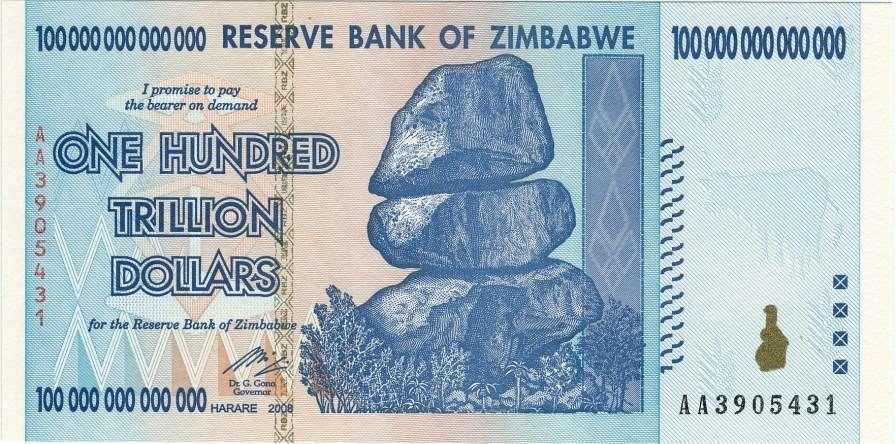

Finally,anotherexampleofhowcorruptionand economicmismanagementcontributedto hyperin��ationinZimbabwewasthroughthepoor economicpoliciesthatwereimplementedwiththe motivationtobene��ttheelite.Corruptof��cials manipulatedpricecontrolstobene��tthemselvesor theirassociates,whichexasperatedshortagesand
Onbalance,whilstrecentadvancesineconomic policyandinstitutionalframeworkshaveresultedin relativeglobalpricestability,Zimbabwehasclearly sufferedfromtheconsequencesofeconomic mismanagementandcorruption.Theperiodof hyperin��ationwastheresultofalackof accountableandtransparentleadership,leadingto corruptionandcatastrophiceconomicmanagement. Thecombinationoftherecklesslandreforms, exploitationofnaturalresourcesandthe manipulationofpricecontrolswereultimatelykey driversofthecollapseoftheZ$,whichresultedin seriousconsequencesforZimbabwe.
VerityV,Y12
TooBigtoBail:Thecollapseof LehmanBrothers
Everyonehasheardtheage-oldmantraof��nancial institutionsthatare‘toobigtofail’,meaningthat theyaresocrucialtotheeconomythattheir collapsewouldbedevastating,andtheyare thereforesupportedbythegovernmentwhen facingpotentialfailure.Thetermwasbrought moreintothepubliceyeinthewakeofthe2008 ��nancialcrisiswherehundredsofUS��nancial institutionsreceivedsomesortofaid,whetherthat wasintheformofthegovernmentsTroubled AssetReliefProgram(TARP)ordirectindividual bailouts,inanattempttokeepthese��rmsfrom goingbankruptandforthemostparttheiractions weresuccessful.However,foroneinstitutionthe bailoutdidnotgoaccordingtoplanandonthe 15thofSeptember2008thefourthlargestUS investmentbank,LehmanBrothers,��ledforthe largestbankruptcyinUShistory.Buthowdiditall gosowrong,andwhyweretheytheonlybankof thiscalibreallowedtofail?Themainculpritlies intertwinedwitharootcauseoftheentireGlobal FinancialCrisis:Subprimemortgages. Lehmanwasoneofthe��rstofWallStreet’s
investmentbankstoenterthemortgagebusiness withtheir1997acquisitionofAuroraloanservices, andthenin2000thepurchaseofBNCMortgage LLCquicklymadethemaforcetobereckoned with,asfouryearslatertheyhadmade$40bn fromloansandby2006AuroraandBNCwere lendingalmost$50bnpermonth.These2 companieshoweverwerenotwithoutrisk,with thembeingAlt-Aandsubprimelenders respectivelywhichmeansthattheylenttopeople whomayhavehadmoredif��cultyinrepaying.This meansthattheseloanswereriskierandusually hadlower-qualitycollateralandhigherinterest rates,sotheywere‘subprime’(Alt-Abeinga middlegroundbetweenprimeandsubprime).
OvertimeLehmancontinuedtogrowandsodid thelevelofriskwithinthebank’slendinghabits. Theybegantoleveragetheircapitalathugerates andaccordingtotheirownbalancesheeton November30th,2007,theyhad$691bnworthof assetsbackedupbyonly$22.5bnofequity-this meanstheywereleveragingtheirassetsatalmost 31x.Whileyes,thisisanoutrageousrateforan
investmentbanktoday(asitisusuallyhedgefunds whousethisamountofleverage)itisimportantto notethatLehmanweren’ttheonlyonesdoingthis atthetime.Leveragingthesesubprimemortgages wasgolddustandthebiginvestmentbankswere ridingthehighuntilLehmanhappenedtobethe ��rsttocomecrashingdown.GoldmanSachsand MorganStanleywerealsoleveragingathugerates (26.2xand28.9xrespectively)howeverthe differencewasthesizeofboththeirassetsand equitywasmuchlarger,withGShaving$1120bn backedby43,andMShaving$1045bnbackedby 36).Thiscombinationofthembeingsmaller,more leveragedandmoreinonsubprimemortgagesthan theotherbanksledtoLehmanbeingthe��rsttofail whenthecrisisstruck.
Thecauseofthesubprimemortgagecrisiswasthe burstingoftheUShousingbubblewhichpeakedin 2006whererisinghousepricesoveralongperiod oftimeledtoborrowerstakingonmorerisky (subprime)mortgagesassumingthattheywould quicklybeabletopayitback,howeveroncethe bubblepoppedandhousepricesstartedtofall, interestratesbeguntoriseandmanyborrowers couldnotaffordtorepaytheirmortgagesleading toadramaticincreaseindefaultsandforeclosure. Thisledtothedemandformortgage-related securitiesevaporating.
ThebeginningoftheendforLehmancamein August2007wheretheyclosedtheirsubprime lenderBNCMortgageonaccountthatthepoor marketconditions“necessitatedasubstantial reductioninresourcesandcapacityinthesubprime space”.Butasthecrisiscontinued,theholeLehman haddugbytryingtoholdontotheirmortgage securities(whetherthiswasaconsciousdecisionor justinabilitytosell)justgotdeeper:inthe��rsthalf of2008Lehmanstocklost73%ofitsvalue,and astheyearwentonthestockcontinuedto plummetuntilitwasclearthatLehmanwerein desperateneedofhelp.
AsImentionedbefore,thereasonthishappenedto Lehmanbeforetheothermajorbanksisbecause theywereslightlysmallerandslightlymoreinon subprimemortgagesanditwasthecombinationof theselittlethingsthatledtothembeingoneofthe ��rsttoneedabailout,butthereasontheynever
receiveditisslightlydifferent.Afewmonthsbefore thisasmallerinvestmentbanknamedBearStearns wasinasimilarsituationtoLehmanandtheFed orchestratedtheirsaletoJPMorganChaseaswell as$30bnofbacking.Thisbailoutsparkedpublic andpoliticalbacklashaspeoplerealisedthatif banksknewtheycouldtakewhateverrisksthey wantedandalwayshavethegovernmentasa safetynet(moralhazard),theywouldstarttotake advantageofit.So,whenLehmanbegantocollapse afewmonthslatertheFedwasunderpressureto notappearasiftheywerebailingoutWallStreet again,sosomepeoplebelievethebankwasallowed tofailasawarningtoothersandtoshowthat thesebailoutswerenotguaranteed.Therewere alsootherreasonsthebailoutdidn’thappeninthe endsuchasaseeminglyassuredpurchaseby Barclayssuddenlyfallingthroughasithadbeen vetoedbytheBankofEngland.
ButintheendafterLehmanhadgoneunder,partly duetotheirownrisktakingandpartlybecauseof unfortunatetiming,theUSgovernmentandFederal reservecontinuedtofund$700bninbailoutsfor otherbanksasLehman’scollapsewascatastrophic forthemarketsandmanypolicymakershavesince admittedthatitwasthewrongdecision.So ultimately,LehmanBrotherswasjustslightlymore atriskthantheotherbanksandtheywereallowed togounderasawarningtoother��rms–butthe aftermathrevealedthatfortheU.S.Government, nobankisTooBigtoBail.
LachlanM,Y12
CrisisCapitalism:Pro��ting fromTragedy
Intimesofcrisisduetoeitherpandemics,warsor naturaldisastersthereisoftenwidespreadchaos anddesperationforpeoplebattlinglossofjobs andstrivingforeconomicsurvival,yetthereare alsoafewwhoareabletoutilisethesetragedies inordertopro��t.Thisisoftenknownascrisis capitalismwhichhighlightstheethicaldilemmas thatariseaspro��tmotivesfor��rmsclashwiththe wellbeingofsociety.Examplesofthiswouldbe pricegougingandstockpilingoftenatthehandsof insuf��cientgovernmentregulationsduringcrises whichinternincreasestensionsbetweeneconomics andthecollectivegoodofsociety. Thisarticle explorestheethicalandpracticalcon��icts surroundingpro��teeringandraisescritical questionsbetweenthebalanceofthe��rm's responsibilityand��nancialgains.
Firstly,crisesoftencausedisruptionsofsupplyand demandinmarketswhichcreatesimbalances betweencorporatepro��tmotivesandsocietal needsleadingtowidespreadcon��ictofobjectives. ThisisshownduringtheCOVID-19pandemic wherethereweresigni��cantshortagesofessential goodssuchaspersonalprotectiveequipment (PPE),handsanitizersandventilatorswhichcaused pricestorapidlyincrease.Duringthis��rmssuchas
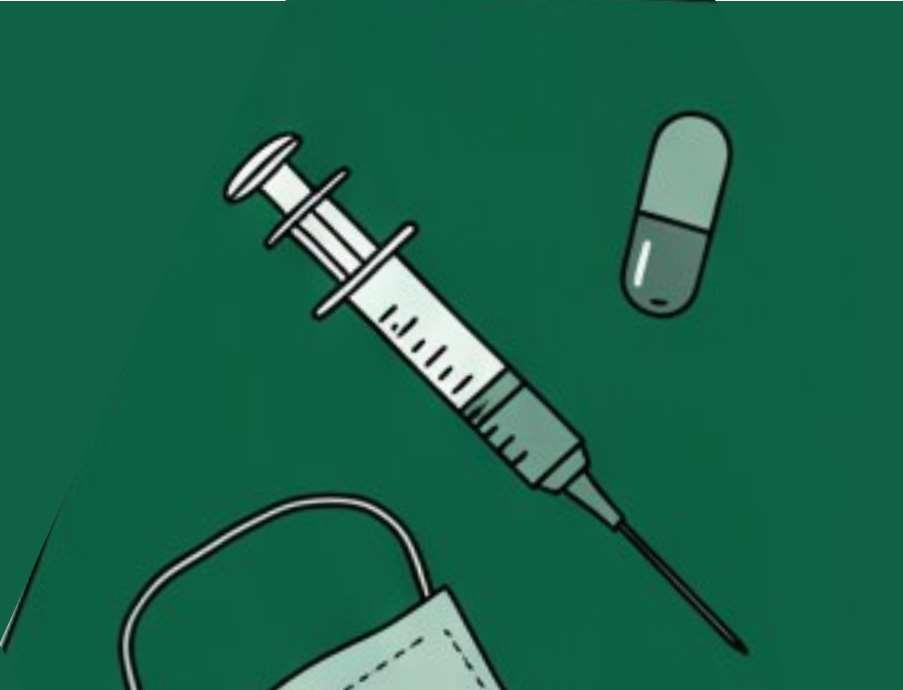
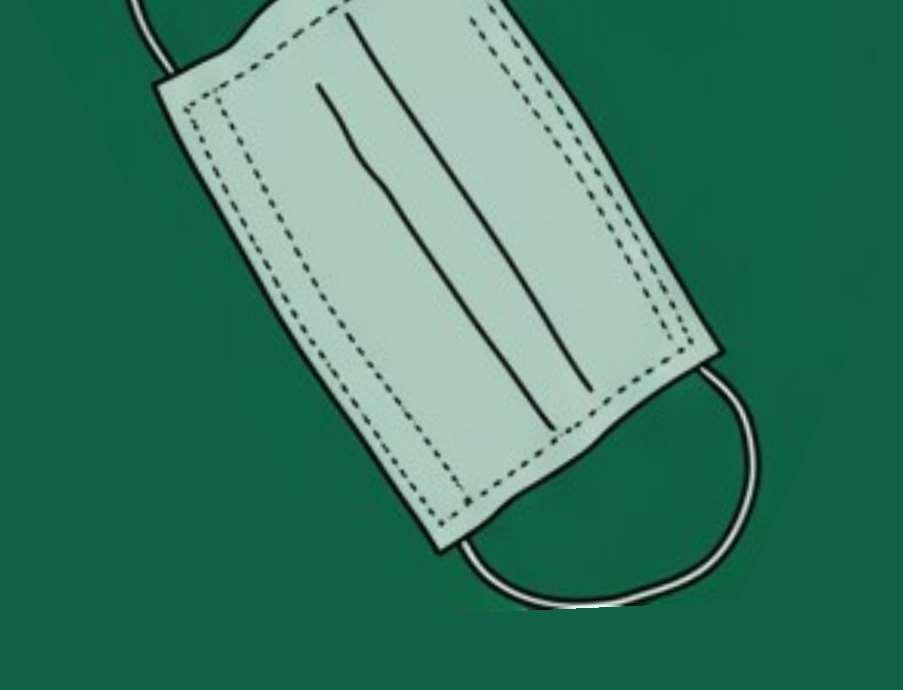
3M,anAmericanmultinationalconglomerate operatinginthe��eldsofindustry,workersafety, andconsumergoodsfacedaccusationsofprice gouging.Pricegougingisreferredtoasthe unethicalpracticeofraisingpricesonessential goodsandservicesduringemergencies.For instance,sharpincreasesinthecostofmedical supplies,food,orfuelduringpandemicsornatural disasters.Inthiscase3Mwereaccusedofprice gougingmaskssellingthemat7xmorethan marketpricewhichwasaround$1.Althoughnot directlythecompanies'fault,third-partysellers wereplacingPricesfor3Mmasksatupto$198.99 forapacketof10onamazon.Inaddition, pharmaceuticalcompaniessuchasModernaand P��zerreportedrecord-breakingrevenuesfrom vaccineswhichinitiatedcontroversyaboutwhether theywerepro��tingexcessivelyfromtheglobal suffering.


Alongsidepandemicsafternaturalcrisessuchas hurricaneKatrinatherewherehousingcrisesin placessuchasNewOrleanswheredemandfor housescompletelyoutstrippedsupplywhich renderedfamiliesunabletoaffordthemostbasic accommodation.AccordingtotheOCALAPriorto thehurricane,themedianhomepriceinthe secondquarterof2005was$152,600,re��ecting an11%increaseoverthepreviousyear.Inwarsit isoftenthearmsmanufacturerssuchasLockheed MartinandRaytheonthatoftenseethemost signi��cantincreaseinstockpricesoftenderived fromgovernmentspendingofmilitaryequipment whilecivilianssuffer.FromtheRussiainvasionof UkraineLockheedMartinstockpricehasincreased from360.14USDonJan7th2022,to611.81USD onthe18thofOct2024.Thisstaggeringgrowth ofnearly70%re��ectsthedirect��nancialbene��ts thatdefencecompaniesgainduringprolonged militarycon��ictsandthereforewithoutadoubt
thisshowstheextentinwhich��rmsare pro��teeringfromthesufferingofsociety.
societaldivides.


Theseexamplesshowtheextentinwhich corporationscancapitaliseonthedisruptions causedbycrisesandtheincreaseinsocial inequalitiesbecauseofit.Forvulnerablesocieties, theimpactofthispro��teeringismuchmore extensivewithlow-incomehouseholdsstrugglingto affordbasicnecessitygoodssuchasmedical suppliesneededtopreventthetransmissionof diseasesorshelterafternaturaldisasters.Many businessesdefendsuchactionsbyblamingsupply chaindisruptionsforexample,JonTaffer,a prominentbusinessconsultantwhostated"There's ahugesupplychainissuehappeningrightnowthat isoutoftheircontrol." howevercriticsarguethat pro��teeringduringcrisesdeepenssocietaldivisions andruinstherelationshipoftrustbetween��rms andhouseholds.Anotherexampleofthisishow pharmaceuticalcompaniesclaimthathighpro��ts fundresearchanddevelopmentwhichinturn enablesrapidvaccineproduction.However,the monopolizationofmedicalresourcesandhighcosts forlow-incomedevelopingcountrieshastherefore createdtheviewthat��rmsareseentobe prioritizingrevenueoverglobalequity. Duetothis theroleof��rmsincrisesremainsethicallyand practicallydivided.Ontheonehand��rmsdoneed toprioritisepro��tsandthereforeincentivise innovationandincreasetheef��ciencyofgoodsthe productionoftheirgoodsasshownwiththerapid developmentofcovidvaccineswhichcouldbe arguedasapositiveduetoitsabilitytoenablea quickresponsetocombatthevirus.Althoughon theotherhandtheuncheckedpro��teeringoften leavesthemostvulnerableareasofsocietybehind inordertoturncrisesintoopportunitiesandareas toexploitratherthanequitablerecovery. Abalancemustbestruckinwhichgovernments, regulatorybodiesorotheralternativesmust intervenetopreventunethicalpractices suchas pricegougingandmonopolisticbehaviours. However,thismustalsoallowcompaniesto maintain��nancialresponsibilityandstillkeep ethicalframeworkswhichcanhelpbusinesses navigatethesetensionswhichensuresthey contributetocrisisrecoverywithoutdeepening
IftherewasGovernmentinterventionsuchasprice capsoranti-gouginglawswhichaimtoprotect consumers,thiscouldcreatedebateontheroleof thestateineconomicaffairs.Ithasbeenargued thatsuchinterventionsarenecessarytoprevent exploitationduringtimesofcrisisandtoensure accesstoessentialgoods.Critics,however,claim thattoomuchregulationunderminesmarket ef��ciencyandcouldresultinshortagesif businessesarediscouragedfromsupplyingessential goodsatcompetitiveprices.Ethicalargumentsfor governmentinterventionemphasizetheneedto protectvulnerableconsumersandensurefairness duringcrises.Whenleftunchecked,marketforces canleadtoexploitation.However,fromafreemarketstandpoint,excessiveinterventionmay interferewithsupplychaindynamicsand innovation.Balancingregulationandmarket freedomisadif��cultethicalchallenge,particularly intimesofwidespreadscarcity.

Whileitsimportanttoconsiderthatpro��teering duringcrisesraisesalotethicalconcerns,it’salso importanttoacknowledgethatthefreemarket playsanessentialroleindrivinginnovationand ef��ciencyparticularlyinemergencies.Forexample, thedevelopmentofCOVID-19vaccinesbyP��zer andModerna,thoughhighlypro��table,played leadingroleinmitigatingthepandemic.Becauseof thispro��tmotivescanincentivizemorerisktaking andinvestmentinsolutionsthatmightnotemerge underheavyregulation.However,thisdoesn’tmean companiesshouldoperatewithoutoversight.A balancedwayforwardcouldincludetargeted governmentintervention,suchastemporaryprice capsonessentialgoods,subsidiesforcritical services,andstrongeranti-gouginglawsduring statesofemergency.Additionally,implementing crisisspeci��cwindfalltaxesormandating reinvestmentaportionofpro��tstowardspublic healthorinfrastructure.Thiscouldthereforehelp ensurethat��rmscontributetorecoverywhilestill bene��tingfrommarketmechanisms.Thisapproach maintainsthedynamismofthefreemarketwhile promotingethicalresponsibilityandequitable outcomesduringtimesofcrisis.
LukeH,Y12
FragileCon��dence: UKConsumersina Post-
Tari��World
YouwanttobuyaPlayStation5toplaygames withyourmatesafterschoolandsaveenoughto beabletobuyboththe£340consoleitselfanda brand-newdigitalgamethateveryoneelsewants, savingformonthstogetbothatthesametime. Althoughwhenyou��nallyreachyourplanned savingsof£400,suddenly,thePS5youyearned forisnowtooexpensive–heartbreaking!
SonyhasincreasedthepriceofitsPS5by25%, withtheJapanesegamedevelopersayingithadto makethe“toughdecision”asthevideogame industryreelsfromDonaldTrump’stariffs. Claiming“achallengingeconomicenvironment, includinghighin��ationand��uctuationexchange rates”isbehindtheirrationale.Whileitmightbe frustratingnotbeingabletoplaygameswithyour friends,there’samuchbiggerissuegoingon globally.Industriesaroundtheworldarestruggling withtheeffectsofnewtariffsintroducedbythe U.S.President.OnMay23rd,heproposeda50% tariffonallgoodsimportedfromtheEuropean Union.TheUKisnotdirectlytargetedbythis policy(sinceit’snolongerintheEU),butit’sstill beingaffected.That’sbecauseglobalsupplychains areinterconnected—andwhentheU.S.putsup tradebarriers,theshockwavesarefelteverywhere. WhatcouldthesemeanfortheUKconsumer?
Perhapsthemostobviouseffectisthatonin��ation andthecostofliving.Trump’s60%tariffon ChinesegoodsandtargetedEUexportsadds in��ationarypressureworldwideasimportedgoods becomemoreexpensive,notjustfromtheU.S.but alsothroughlengthier,moreredirectedsupply chainsasimportersareforcedtoredirectthrough Europe.UKin��ationhasbeencitedtorisebyupto 4percentagepointsaccordingtotheNational
InstituteforEconomicandSocialResearch (NIESR),astheBankofEnglandmaintainhigher interestratesandpermittingtariffenforcement. Naturally,risingcostsoflivingcouldapplyaheavy squeezeonhouseholdbudgets–lowerincome householdsexperiencerisingfood,clothing,and electronicspricesgreater,whichservestoincrease themarginalpropensitytoconsume.Hence,a largerproportionofanyadditionalincomeistaken uponnecessitiesandthecostofliving intrinsicallyishiked.Within��ation alreadystrainingUK households,the BoE
areleftwithadif��cultbalancingact:shouldthey keepinterestrateshighandcontrolprices,butat theriskofstagnatinggrowth?
Ontheotherhand,thesetariffsmeanalotforjobs andproductsintheUK–particularlyautomotive, steelandretailindustry.TheUKautoindustryis greatlyreliantonexportstotheU.S,particularly modelsofRangeRoversandMiniCoopers–Trump’s25%tariffoncarimportsfromEurope mayextendtotheUK,despiteBrexitindependence. Thisleavescar��rmssuchasBMW(Mini)facing multi-million-poundlossesthatwouldforcethem toscalebackUKproduction,reduceinvestmentand possiblymovingproductiontotariff-exemptzones; itisapproximated25,000jobsinthissectorareat risk,mostlyinregionsalreadyvulnerableto economicdownturni.e.industrialestates.Thesteel industrywillbearthebruntofTrump’sreturning longstandingtariffsonmetals,asUKproducers facedecreasedordersfromU.S.partners–adding toanalreadydecliningsectorintheUnited Kingdom.Thismeansjobsin traditionalmanufacturing epicentres,





suchastheMidlandsandNorth,areparticularly exposed.Finally,theimpactoftariffsonretailand smallbusinessesispossiblythemostdirectwith 62%ofUKbusinessestradingwiththeU.S. reportingnegativeimpactsaccordingtotheBritish ChambersofCommerce(BCC).Retailersreliant uponAmericanbrandsand/orcomponentslike electronicsandartisangoodsarethemost vulnerable–manyareforcedtoraisepriceor, worryingly,cutentireproductlinestostaya��oat thusstarvingtheBritishpeopleofthepotential bene��ts.
Alternatively,theUKretailsectorcouldexperience importsurgesinresponsetothetariffs.AsTrump’s renewedimpendingtradewarwithChinacontinues, Chinese-madedisposablegoodssuchase-cigarettes areredirectedintoalternativemarkets.TheUK, beingoneofEurope’smostderegulatedconsumer markets,isbecomingtheidealdestination.Inthe ��rstquarterof2025alone,UKimportsofvaperelatedgoodssurgedby40%year-on-year.ForUK retailers,thisofferschancestoundercutdomestic priceswithanexcessinsupply–somethingheavily undesirablefordemeritgoodslikethis.However, thisimpendingimportsurgecoincideswiththe scheduledbanonsingle-usevapeslaterin2025, veryworryinglythreateningto��oodthemarket justbeforethebancomesintoforceandheavily encouragingblack-markettrading.
Towrap-up,theUKisonceagaincaughtinthe unintendedcross��reofatradewar–despitepostBrexitseparationthatpromisedtodistinguishus fromEuropeanUnionregulatoryandtradepolicy. Forconsumers,theissuesaretangible–higher prices,fewerchoicesandultimatelymore uncertainty.Signsofresilienceareemerging, boostedbydomesticpolicyandstrongerlabour markets,althoughUKhouseholdsandpolicymakers willneedtostayalertasglobaltradeshocksare likelytopersist.
TeddieC,Y12
Trump’stari��s:Opportunities fortherich, demiseforthepoor.
Atariffisataxplacedbyagovernmenton importedgoods.Itraisesthecostofforeign productstomakedomesticalternativesmore appealing.Tariffsservemultiplepurposed: protectingdomesticindustriesbygivinglocal productsapriceadvantage,increasinggovernment revenuethroughthetaxescollectedonimports, andactingaspoliticalleverage,especiallyduring internationaldisputesortopressuretrade partners.
However,whiletariffscanbene��tlocal manufacturersandgenerateincomeforthe government,theycanoftenhurtconsumersby raisingpricesacrosstheboard,whenbusinesses areforcedtopaymoreforimportedrawmaterials ofproducts,theypasthatcostontoconsumers.As aresult,thecostoflivingincreases,andproduct varietycanshrinkbecausesomegoodsbecome tooexpensivetoimportorsellpro��tably.
Duringhissecondpresidencyin2025,President Trumpannouncedanoverall10%tariffonall
importedgoodsenteringtheUnitedStatesonApril 25th.Thisbreadmovewasfollowedbyahigher, targetedtariffaimedatspeci��ccountries.Notably, chinafaceda145%tariffonallgoodsenteringthe UnitesStates.Inresponsetothis,Chinaimposed retaliatorytariffsofupto125%onAmerican exportscreatingtensionbetweenthetwocountries. Thesetariffswerejusti��edbyTrumpasnecessary fornationalsecurityandtoprotectAmerican manufacturing.However,thepolicieshadserious consequences,bothdomesticallyandglobally.
effects.
Additionally,largercorporationswithamore diversesupplychainweremoreabletoabsorbor workaroundtariffsastheyhadalargersupply base.Smallerbusinesses,particularlythoserelying onimportsfromChina,facedcoststheycouldn’t offset.Thiswidenedtheeconomicgapbetween largeandsmallbusinesses.
Thesuddenannouncementofthesetariffsledto signi��cantmarketinstability,similarinscaletothe 2008��nancialcrash,theDowone’sIndustrial Averagesdroppeddramatically,andinvestors wavered.Thepanicnegativelyimpactedmiddleand working-classAmericanconsumers.Particularly thoseinmanufacturing,retail,andagriculturaljobs. Securitywithinthesejobsweakenedandpricesrose oneverydayitems.
Atthesametime,wealthyinvestorswereaboveto capitaliseonthesituation.Withaccessto��nancial advisorsandavailablecapital,theywerewell positionedtobuystocksatlowpricesduringthe marketdip.Astheeconomybegantoriseagainand stabilise,theseearlyinvestmentsproduced signi��cantpro��ts.Thiscausedtherichtogetricher, apatternseencommonlythroughouthistory.Those whoalreadyhavewealthtendtobene��tfrom volatility,hikelower-incomegroupssufferfromits
Somegoodsandsectorswerehitharderthan otherswhilethetariffswereinplace.Electronics, forexample,relyoncomponentssourcedfrom china.The145%tariffmadedeviceslikemart phonesandlaptopssigni��cantlymoreexpensive.In agricultureChina’sretaliatorytariff’stargeted Americansoybeans,pork,andcorn,devastatingthe UnitedStates.Farmerswhoreliedonexports.The automotivesectoralsostrugglesasmanufacturers whoimportpartswereforcedtoincreaseprices, leadingtolowersalesandproductionslowdowns. Incontrast,steel,andaluminiumindustries,which Trumpaimedtoprotect,sawshorttermgain. However,eventheseswereoffsetbyjoblossesin industriesthatrelyoncheapmetal,like constructionandconsumergoods.
Trump’stariffshighlightthedualnaturaloftrade policies.Whiletheyaimtostrengthendomestic industries,theburdenoftenfallsoneveryday consumersandsmallerbusinesses.Meanwhile,the wealthierconsumersandlarge corporationscanadaptmore easilyorevenpro��tfromthe changes.Aswithmany policies,theeffectoftariffsare notevenlydistributed,andin thiscase,theyhaveincreased existinginequalitiesratherthan resolvedthem.
ZahraC,Y10
Willglobalin��ationcontinue tofall?
Globalin��ationhasdeclinedgreatlyfromitspeak duringthepandemic.In��ationwithintheUnited Statespeakedat9.1%duringJune2022.ByApril of2025,ithaddiminishedto3.4%.Theeurozone hasexhibitedananalogousinclination,asin��ation diminishedfromabove10%to2.4%.
Simultaneously,in��ationwithintheUKhas diminishedgreatlyto2.6%fromits11.1% maximuminOctober2022.Anumberoffactors havesupportedthisdownwardtrend,particularly energypricesnormalisingaswellasglobalsupply chainsrestoringafterdisruptionduringthe pandemicandtheearlystagesoftheUkrainewar. Ascontainershippingtogetherwithproduction ��owsaremostlybacktopre-pandemicef��ciency, supply-sidepressureshaveindeedabated,which
buildsmarketcon��dencethatofthein��ationary periodthenadirmaybebehindus.
Centralbankshaveoccupiedanimportantrole throughouttheglobaldisin��ationprocess.TheUS FederalReservebrisklyaugmentedinterestratesup toatargetrangeof5.25–5.5%.Thisundertaking aimedforcurtailingescalatingprices,achieving peaklevelsinexcessoftwentyyears.TheBankof Englandelevateditsrateto5.25%,likewisetothe EuropeanCentralBankraisingitsprincipalrateto 4.5%.Substantialrepercussionshavearisenfrom theseactions:lendingandinvestment,notablyin sectorssusceptibletointerestsuchashousing, havebeencurtailedbyincreasedinterestrates.For instance,withintheUS,elevatedmortgagerates havedeceleratedhousingconstruction.Thathas
diminishedappetiteandplacedde��ationarystress uponin��ation.
Yetthelandscapeismorenuancedwhen consideringcorein��ation—whichexcludesvolatile itemssuchasfoodandenergy.Corein��ationisstill highintheUK,especiallyinservices,whereprices areincreasingmorethan5%.Oneoftheprimary drivershereiswagegrowth,whichispresently above6%,asignofatightlabourmarketwhere employersareunderpaidpressuretoprovide increasedremunerationinordertorecruitand retainstaff.ThesameishappeningintheUSand eurozone,wheresectoralshortagesoflaborin areassuchashealthcare,construction,andITare tighteninglabormarketstightwithstructural de��cits,makingwage-drivenin��ationsticky.Sticky in��ationisalsodrivenlargelybyrisingrents, particularlyinurbanareas.

sufferingfromaprotracteddownturninthereal estatemarket,whichisamajorsourceofdomestic demand.Becauseofthis,producerandconsumer priceshavenotchanged,andin��ationhasbeen closetozeroandhasevenfallenintode��ationin certainmonths.Asaresult,thepricesofraw materialsandmanufacturedgoodshavedecreased globally.Nevertheless,therearepreliminary indicationsofapossibleimprovement.Arare indicationthatconsumercon��denceandrealestate demandmaybestabilisingwastheMay27th auctionofaluxurypropertyinShanghai,which broughtinoneofthehighestpricesinrecent memory.

Thesituationismixedinemergingmarkets.Brazil andMexico,amongothers,movedearlyand decisivelytocombatin��ation,increasinginterest ratesmorerapidlyandaggressivelythanthe developedworld.Accordingly,Brazilianin��ation standsataround3.8%,Mexicanin��ationataround 4.2%.Theserelativesuccessstorieshaveallowed theircentralbankstobegineasinginterestrates cautiouslywithoutinducingnewin��ation.Turkey itself,meanwhile,isanimageoftheconsequences ofincoherentmonetarypolicy:in��ationisabove 70%duetoPresidentErdoğan'sheterodox approachofloweringinterestratesduring hyperin��ation,whichhasgreatlyundermined marketcon��denceandcurrencystability.
Acounterbalancetothepressuresofglobal in��ationisprovidedbyChina.Itseconomyis
However,therisksforadditionaldisin��ationremain present.Recentgainscouldalsobeunwoundon increaseingeopoliticaltensions.Renewed��ghting inIsrael,shoulditescalateandpromptretaliation byGulfstates,mightliftoilpricesanddisruptkey shippinglanes.Therecentpeacetreatysignedby HouthirebelshasimprovedsecurityalongtheRed Sea,butthesituationisstillveryfragile.Thereare alsopotentialclimaterisksandthepriceoffoodin someareascouldsuddenlyspikeifthereisa droughtora��oodinotherpartsoftheworld. Insummary,eventhoughglobalin��ationis predominantlyonadownwardtrajectory,thereare likelytobesomebumpsintheroad.Themajority offorecastsprojectthatin��ationwillbeinthe rangeof2.5–3%throughtheendof2025,still wellabovepre-pandemiclevelsbutwellbelow recentpeaks.Policymakersstandwatch,struggling toweightheneedforcontinueddisin��ationagainst thepossibledamageofpersistenthighinterest ratesoneconomicgrowth.
JoshH,Y12
ArethecurrentUSdebtlevels sustainable?
Onthe16thofMaythisyeartheUnitedStateslost itslastperfectdebtcreditratingasMoody’s loweredthemfromAAAtoAa1withconcerns aboutthelevelofdebtandgrowingbudgetde��cit intheworld'slargesteconomy.Manysaythishad beenalongtimecomingconsideringthatFitchand S&Ploweredtheirratingsin2023and2011,and anothertermoftheTrumpadministrationlooking likeitwouldwidenthede��citevenfurtherfocusing ontaxcutsandmoredefencespendingallfunded bylacklustrepromisesfromDOGEandtheold reliableincreasedborrowingwiththeideathatit willbesomeoneelse’sprobleminthefuture.But nowthankstothenewcreditrating,theUSis havingtopaymoreinterestontheirdebt,andif Trumpgetshiswayanddoesrunforanotherterm afterthisonethentherapidlygrowingpublicdebt wouldindeedbehisproblem,sowhyisn’the worriedaboutit?
TheUSisn’taloneinitsexorbitantspendinghabits asmanymajorgovernmentsaroundtheworld havedebtlevelsataround100%ofGDP(withthe USbeingataround120%)ashistoricallytheyhave allhadthemindsetthatgrowthpaysoffdebt,but
duetorecentacceleratorssuchastheGFCand COVIDforcinggovernmentstoincreasespendingup tolevelsthatwenowviewasthenorm,it’s becomingincreasingclearthatthehugeamountof debtthesecountrieshaveaccumulatedisgoingto beaproblem.Evenjustpayingtheinterestonthis debtisahugeportionofgovernmentspending, withdebtinterestpaymentsbeingthesecond largestitemintheUS’sbudgetwithitprojectedto passsocialsecurityandbecometheirlargestarea ofspendingin2042.


InthecaseoftheUnitedStates,oneofthemain reasonsforthishugehikeinrecentspendingis thatneitherofthemainpartiesbelievesthatthey willgetelectedwithoutpromisingtaxcutsand increasedspendingontheaveragevoter,butifthis continuesalongthetrajectorytheUSiscurrently onnationaldebtispredictedtorisefrom$30trn todayto$200trnin30yearsandthoselevelsare completelyunsustainable:thecountrywillstruggle topaybackitsinterestandwillbeforcedto reducespendingonothervitalpartsofthe country,andwearealreadyseeingthebeginning oftheseeffects.Trump’s‘OneBigBeautifulBill’ aimedatextendinghis2017taxcutswill reducefederaltaxrevenueby$4.5trn,and theamountElonMusk’sDepartmentof GovernmentEf��ciencyhassavedisbarelya roundingerrorwhenitcomestoaffording this,sotheTrumpadministrationhas resortedtoreducingfundingforthe DepartmentofEducation,Medicaid,the DepartmentofEnergy’scleanenergy projects,andmanyotherprogrammeswith longtermbene��tsfortheUSallinan attempttokeephisvotershappyandby extensionkeephimselfinpower.

So,isanypotentialfutureUSpresident goingtotakeresponsibilityofreducingthe
arguebackthatthecountrydoesnothavethat moneyinthe��rstplace.
IbelievethatfortheUnitedStatesofAmericato keepbeingtheglobalsuperpoweritis,itshould startleadingbyexample-continuingtoignorethe debtcouldeventuallyleadtothedownfallofthe nation.Perhapspoliticiansandpolicymakersshould takealeafoutofthebookfromenvironmentalists whohave,inaway,alreadypartlyovercomeoneof theseproblems.Theyhavegotsomanypeopleto startcuttingtheircarbonemissionstodayinhope forabetterworldinthefuture,becausethe environment,justlikenationaldebt,shouldnotbe brushedoffasaproblemforfuturegenerations;we havebeendoingthatfortoolongandnowweare thefuturegenerations.Socialspendingisbeingcut today,andpeoplearesufferingbecauseofittoday andthiswillnotchangewhilethegovernment continuestofocusonshorttermself-interest.We arethegenerationwhosestablefutureisnowbeing soldforvotes,andjustliketheclimatecrisis,the debtcrisiswillnotwaitforpoliticalconvenience, andtheconsequencesofourinactionarealready uponus.

budgetde��cittotrytosteerthecountry’s��nances backontocourse,andiftheydon’t,isthe governmentjustgoingtokeeptakingfromother aspectsofthecountrytofundtheirspending habits?Thispotentialfutureisn’tjusta‘worstcase scenario’fortheUS,it’sarealisticpossibilitythatin thefuturedebtinterestwilloverwhelmthebudget becauseofgung-hoexpansionary��scalpolicyfrom bothparties:Republicansrallytheirsupporterswith taxcutswhileDemocratsfocusonsocial programmes,allthewhileneitherpartyattempts tofundthesepoliciesinef��cient,sustainableways suchasendingunnecessarycorporatesubsidiesor cuttingbackontheirsigni��cantmilitaryspending. Instead,theychoosetogutvitalsocialprojects, harmingthefutureofAmericabydefunding education,healthcare,andenvironmentalprojects. WhileTrump’spoliciesareeasiertocriticiseasthey focusmoreonunfundedspendingpolicies,thisis absolutelyabipartisanfailureasthebudgetde��cit stillincreasedunderBiden(bearinginmindhedid havetodealwiththeaftermathofCOVIDandthe Russia-Ukrainewarwhichbothincreasedspending). WhileRepublicanspromisetaxcutstheycan't afford,Democratsdothesamewithtrillion-dollar expansionsofhealthcare,education,and environmentalinitiatives;whilemanyarguethat thisisamuchbetteruseofthecountry’smoney,I





LachlanM,Y12
Post-BrexitUKdealwiththe EU:ASummary
Brexithasbeenthetopicofeconomicdiscoursefor multipleyearsintheUKsince2020.Thedeal signedon19thMay2025seekstoimprove problemscausedbyfrictionintrade,food,and travelwhilststayingoutofthesinglemarketor theEU,anditalsoseeksto‘reset’somethepostBrexittensions.Toachievethis,this2025deal aimstoreducesomeconfusionandredtapeby simplifyingthingssuchasfoodtradeandtravel barriers.The‘reset’EU-UKdealisthe��rstmajor agreementbetweentheUKandtheEuropean UnionsincetheTradeCooperationAgreement (TCA)inDecember2020.Thedealtargets5main sectors:��shing;foodandanimalproducts;travel andmobility;energy;andsecurity.
Intermsof��shing,thenewdealseekstoallowEU boatstocontinuetheiraccesstoUKwatersuntil 2038,anditisimportanttonotethatthe2020
Brexitdeal,whichsawtheUKregain25%ofthe EU’s��shingquota,wasduetoexpirenextyear.In ordertoallowEU��shermen,theUKwillcontinue toagreeyearlyquotaswiththeEU,Norwayand issuelicensestocontrolwho��shesinUKwaters andhowmuchtheyareallowedtocatch.TheEU vesselswillhavetotransfer25%oftheir��shing quotatoUK��eets.£360millionisalsoplannedon beinginvestedintonewtechnologyandequipment. Fromthisdeal,theUK��shermenmayfeelasif theyarelosingoutastheywantedannual negotiationson��shingaccess;however,the��shing industryaccountsforasmallamountofGDP,in 2024itwas0.04%,whichlikelymeansthatthis maynothaveabigimpactontheoveralleconomy. Althoughthe��shingindustryisquitesmall,itis quitepoliticallysensitive.ItisclearthattheEUis bene��tinglargelyinthispartofthedealasthey
gain12moreyearsofaccesstotheUKwaters.
Thefocusonfoodandanimalproductsmaybe consideredoneofthemosteconomically signi��cant.Inreturnfortheextensionof��shing rules,theKeirStarmer’sgovernmenthasmanaged tosecureadealtoreducechecksonfoodexports totheEU.Thiswillreducetheredtapeandmakeit easierforfarmingexportstobeexported:majority oftheborderchecksonanimalandplantshipments willbedropped.Furthermore,thenewsanitaryand phytosanitaryagreement(SPS)meanstheUKwill beabletosellrawburgersandsausagesbackinto theEUsinceBrexit.Thisaspectofthedealmay underminetheUK’sparliamentarysovereigntyas theUKwillbeexpectedtofollowEUrules, overseenbytheEuropeanCourtofJustice; however,itmaybreakaway.Thispartofthedeal maybebene��cialastheUKfoodexportstotheEU havefallenbyaround34%between2019and 2024,andthefallinexportscanbeattributedto theredtape.Furthermore,foodexportstotheEU accountsfor57%ofallthesectorsoverseassales, withitbeingworth£14billionin2023.Itisalso statedthattheUKwillhavetomakea��nancial contribution,thoughitisunclearhowmuch.
wouldresultinatemporaryincreaseinimmigration astheUKwillbeabletograduallyincreasethe quota.
Withthisdeal,travelonholidaysshouldbecome easierasthisdealintendstoallowBritish holidaymakerstousee-gatesatmoreEuropean airports.Post-Brexit,thefreemovementofUK travellersdecreasedastheUKtouristswereshut fromusingEUe-gates.EachEUcountrywilldecide ifUKcitizenswillbeabletousee-gatesornot.This shouldintheorymakeUKcitizensandtheirpetsto travel,reducingtheneedforvet-certi��cates.Itis unclearwhenthiswillbeapplied;thoughitis speculatedtobeimplementedafterthenewdigital bordercheckssystemisrolledoutinOctober.
TheUKandEUwilllinktheircarbonmarketsto avoidtaxesoncarbonintensivegoods–suchas steel.Itisbelievedthatthegovernmentwillsave £800millionintaxesandwouldreducetheimpact oftariffsonBritishsteel.Discussionsonbuyingand sellingdirectlyintotheEU’ssharedelectricity marketwillstartsoon,buttheUKwillhaveto abidewithEUrules��rsttoguaranteeadeal.

TheUKandtheEUhavealsoagreedtocooperate ona“youthexperiencescheme”,butthisisstill subjecttofurthernegotiations.Theaimofthis schemeistoallowtheyouthtotravelfreelyand workinEuropeagain,afterBrexit,andtheideaof theschemeistomirrortheschemesthattheUK alreadyhaswithothercountriessuchasAustralia andNewZealand:thereisanannualquotaofvisas fortheyouth,forthosebetweentheages18-35,to workinothercountriesforuptothreeyears.The UKisalsoconsideringrejoiningtheErasmus+ programme,whichwouldallowstudentstostudy abroadordoaninternshipabroad.Thiswillresult inthereductionofregulationandredtape,which shouldbene��tyoungpeoplewhowanttoworkand studymorefreelyinothercountriesintheUK; however,theresultofthisschememaybeuneven. Pre-Brexit,moreyoungpeoplefromtheEUwere immigratingintotheUKratherthantheotherway around,andthismaycon��ictwithKeirStarmer’s goalofreducingimmigrationlevels.Madeleine SumptionfromOxfordbelievesthatthisscheme
Thedefenceandsecurityaspectofthedealaimsto bemutuallybene��cialforboththeEUandtheUK. Aformalpacthasbeenestablishedandof��cials fromtheUKandEUwillmeeteverysixmonths discussaboutdefenceandforeignpolicy. Furthermore,bothsideswillcoordinateon sanctions,sharemoreinformationondatabases suchasDNA,anddevelopaspace-relatedsecurity policy.TheUKisalsosettojoinEU’sPESCOproject onmilitarymobility.UK-basedarms��rmsmayalso gainaccesstotheSecurityActionforEuropeSafe, whichisa£150billionEUfundprovidingloansfor defenceprojects;however,itisunclearhowtheUK willparticipateinthefund.Thisdealmayenable UKdefence��rmstogetmorecontractsfromthe rearmamentfund.
Onthewhole,bothpartiesbene��tandloseouton certainaspectsofdeal.The‘reset’dealshouldbe bestseenasadealthatseekstoreducepolitical damageratherthanonethatseeksradicalchange. Thisdealshouldreducepost-Brexitfrictionsand mayleadtomoredealsinthefuture.
DanielK,Y12
RaghuramRajan
RaghuramRajanisamanofmanytalents:bethat inacademiaasacurrentProfessorofFinanceatthe UniversityofChicago,inprophesisingcrisesasthe formerChiefEconomistattheInternational MonetaryFund(IMF),orincentralbankingasthe 23rdGovernoroftheReserveBankofIndia.He��rst capturedglobalspeculationin2005whenatthe FederalReserve’sJacksonHoleconference,Rajan
warnedaboutthegrowingrisksinthe��nancial systemandthata��nancialcrisiscouldbe imminent,subsequentlyproposingpoliciesthat wouldreducesuchrisks–ofcoursehisvisions wouldcometofruitionjust3yearslaterinthe 2008GlobalFinancialCrisis.Althoughhispersonal workshouldnotbeforgotten;athomeinIndia,he becamearespectedandsomewhatcontroversial ��gureforhisreformiststanceandsteadfast commitmenttocentralbankauthority.Today, Rajanremainsanideologicalleaderonissues aroundinequalityandthefutureofcapitalism, teachingattheBoothSchoolofBusinessasthe KatherineDusakMillerDistinguishedService ProfessorofFinance.
TheoverridingthemeofRajan’searlylifewas breadth;hisfatherwasaseniorintelligenceof��cer, meaninghewouldbein-and-outofmanyschoolsin India,SriLankaandBelgium.In1985heachieveda bachelor’sdegreeinelectricalengineeringfromIIT Delhi,afterthishewouldgoontoearnthe equivalentofamaster’sinbusinessadministration (MBA)fromIIMAhmedabad.Afterabriefstintasa managementtrainee,Rajanthenwentontoreceive aPhDineconomicsfromMITundersupervisionof prominenteconomistssuchasStewartMyers–writinghisthesistitledEssaysonBanking,three essaysontherelationshipbetweena��rm/country
anditscreditorbanks.Theinternationalscopeofhis educationwouldlaythefoundationsforhisfuture abilitytounderstandtheglobaleconomy. Thisleadsusnicelyintohisacademiccareerand thekeycontributionsRajanhasmadetoacademia. Withkeyacademicfocusoneconomicdevelopment, hehaswrittenextensivelyonbanking,corporate ��nance,international��nanceandgrowth.In2003, Rajanco-wrotetheworkSavingCapitalismfromthe CapitalistswithLuigiZingales,advocatingfor stronger��nancialinstitutionswhilstcritiquing closed��nancialmarketswithentrenched incumbents–claimingeconomicgrowthisinhibited. TwoyearslaterattheJacksonHoleconference previouslymentioned,Rajanwould��ndhisclaimto fameintheformofapredictionaboutthe upcoming2008GlobalFinancialCrisis–atthetime hecameundercriticismfromtheformerU.S. TreasurySecretary,callingthepredictions “misguided”.Followingthe��nancialcrisis,Rajan wasregardedasoneofthefewwhoforesawthe global��nancialcrisisandgainedglobalcredibility. Althoughhehimselfwouldemphasisethereasons forhispredictionswere“becausethefundamentals weredistorted,”notbecausehe“hadacrystalball”. Rajanlaidforththesefundamentalstressesinthe Americanandglobaleconomyinhis2010book FaultLines:HowHiddenFracturesStillThreatenthe WorldEconomy–suggestingwideningincome inequality,tradeimbalancesandtheclashbetween arm’slength��nancialsystemswereresponsiblefor bringingaboutthecrisis.Thebookwonthe FinancialTimesandGoldmanSachsBusinessBook oftheYearAward.
MuchofRajan’sabilitytounderstandthe fundamentalsofeconomiccrisescanbeattributed tohistenureastheIMFchiefeconomistduring 2003and2006,whenhewastheyoungestever toholdthisrole.Despiteclaimingtonot“knowany macroeconomics”,Rajanwasappointedforhis “particularexperiencein��nancialsectorissues”.He successfullymaintainedtheorthodoxIMFposition of��scalausterityintheaftermathofthe1997 Asian��nancialcrisis,publishingpaperswithArvind Subramanianquestioningtheef��cacyofforeignaid
indevelopingcountries–claimingithasadverse effectsongrowth.AsthegovernorfortheRBI, Rajantookchargeinaperiodofhighin��ation, currencydepreciationandinvestoruncertainty–afterhis��rstdayinof��cetherupeerose2.1% againsttheUSdollar.Rajanmadecurbingin��ation hisprimaryfocusandwassuccessfulbringingdown retailin��ationfrom9.8%in2013to3.78%in 2015throughtheintroductionofstructuralreforms likebankassetqualityreviewsandinitiativesto improve��nancialinclusion.
AfterleavingtheRBI,hereturnedtotheUniversity ofChicagoandcontinuedwhereheleftoff–advocatingforissuessuchasinequality,populism anddemocraticcapitalism.Hismostrecentwork, TheThirdPillar,waspublishedin2019andexplores therelationshipbetweenthemarket,stateand community–wherehemakestheclaimthatlocal communitiesmustnotbelostastheyarestrong driversintheglobaleconomy,makingsocial observationsaroundtraditionalbartereconomies versusmodernexchangemarkets.Raghuram Rajan’slegacyiswithoutdoubtoneofresponsible capitalism,soundinstitutionsandglobal cooperation.
TeddieC,Y12
JohnMaynardKeynes
KeynesandCrisis
Economiccriseshaveahabitofshakingthe foundationsofconventionalwisdom.Whenmarkets falter,unemploymentsoarsandgovernments scrambletorespond,theideasthatunderpin normaleconomicpolicycomeunderintense scrutiny(fromsourcessuchasmedia,economists acrosstheworldetc.).Feweconomistshavehada morelastingin��uenceonhowsocietiesunderstand andtackleeconomiccrisesthanJohnMaynard Keynes.Hiswork,bornoutoftheturmoilofthe early20thcentury,continuestoshapedebates abouthowtomanageeconomiesindistress.
TheMakingofaCrisisEconomist
JohnMaynardKeynes(1883-1946)wasnotan ivory-towertheorist,butaneconomistdeeply engagedwiththeproblemsofhistime.Educatedat Cambridgeandactiveingovernmentservice, Keyneswitnessed��rsthandtheupheavalsofthe FirstWorldWar,theGreatDepression,andthe SecondWorldWar.Thiswasthetimeweremostof hissigni��cantideaswerethought.Keynes' perspectivearosefromtheunderstandingthat classicaleconomicsofthenineteenthcenturywas awryandthatexperimentationandempiricalproof
wasthebestwaytolearneconomics.Keynes championedtheideathatmarketsdonotselfcorrectintheshortrun;economiesintroubledo notautomaticallyself-adjusttofullemployment levels.Say'sLaw—thatsupplyequalsdemand— assertsthataspeoplecreategoods,simultaneously, theycreatethepurchasingpowertobuythose goods—wascertainlynottheappropriateduring timesofmassunemployment.Yet,thiswastrue duringtheGreatDepressionofthe1930s.Wages andpricesfell,yetEuropeanandAmerican economiesstruggledwithrampantunemployment andthecontractionofGDP.Crisesanddisasters werewhatbrokedowntheunderpinningsof classicaleconomics.
TheGeneralTheoryandtheConceptofDemand De��ciency
Keynes’smostfamouswork,TheGeneralTheoryof Employment,InterestandMoney(1936),provideda newframeworkforunderstandingeconomicslumps. Centraltohisphilosophywasaggregatedemand— thetotaldemandforeverythingproducedandsold withinaneconomy.Keynesthoughtthatarecession happenedwhenaggregatedemandwastoolow; whentoomuchcapacityexistedandresourcesand peoplewentuntapped.However,insteadofthinking thatovertime,theeconomywouldcorrectitself, Keynesthoughtthatcorrectionwouldneveroccur. Whenpeopleandcorporationslosecon��denceinan economy,theystarttospendless.Theybuyless, andthismeanslessemployment,whichrenders evenlessspending.Thus,aneconomycouldlock itselfinsuchadownwardspiralthatlowered expectationsforcorrectionwouldcreatesustained periodsofeconomicsufferingwhereanequilibrium wouldneverbeachieved.
GovernmentasanEconomicStabiliser
Keynes’ssolutionwasbothradicalandpragmatic: governmentintervention.Hearguedthatinacrisis, thestatemustshiftdemandthrough��scalpolicy— increasinggovernmentspending,decreasingtaxes, orboth.Byputtingmoneybackintotheeconomy, thegovernmentcouldoffsetanyreductionsfrom theprivatesector,raiseconsumptionand investmentrates,andputpeoplebacktowork.
Suchadvicewasafarcryfromlaissez-faire approachesofthepastthatcreatedahistorically instilledscepticismofgovernmentinvolvement.But Keyneshadaneffectivecaseforwhenthesituation calledforit;notonlywaspublicpolicyeffectivebut necessary.Hisideaslaidtheintellectualfoundations forwhatbecameknownasKeynesianeconomics.In thepost-warperiod,governmentsacrossthe WesternworldadoptedKeynesianpolicies,using publicspendingtomanagebusinesscyclesand pursuefullemployment.Institutionslikethe InternationalMonetaryFundandtheWorldBank, shapedattheBrettonWoodsConferenceKeynes helpedorganise,weredesignedtopromoteglobal economicstability.
RelevanceinModernCrises
ThoughKeynesianeconomicsfelloutoffavour duringthelate20thcentury,criticisedby advocatesofmonetarismandfree-market liberalism,itmadeastrikingcomebackduringthe global��nancialcrisisof2008.Facedwith collapsingbanksandplungingdemand, governmentsaroundtheworldadoptedstimulus packagesreminiscentofKeynes’srecommendations.
TheCOVID-19pandemicbroughtanotherstark reminderoftherelevanceofKeynesianthought.As economiesshutdown,governmentsrespondedwith massive��scalinterventions,fromfurloughschemes todirectpaymentsandinfrastructureinvestments, topreventacompleteeconomiccollapse.
HisLegacy
Keyneswasnotafatalistorapessimist.Hethought thatsocietiescouldlessentheworsteffectsof economiccrisesbyimplementingsensiblepolicies andconductingthoroughanalysis.Hisworkserves asareminderthateconomiesarehumanconstructs thatarein��uencedbymarketpsychologyand policymakerchoices.Intimesofcrisis,Keynes’s messageremainsbothrelevantandreassuring: whenprivatecon��dencefails,publicactionmust��ll thegap.It'sanideathatwithstoodtheupheavalsof thelastcentury—andlikelywillcometothefore amidtheupheavalsofthenextcentury.
SamP,Y12
GetInvolved
EconomicPersepectivesneedsarticlesandbookreviews.Itwouldbegreattohavemore pupilscontributingfromallyeargroups.Whynotpickoneofthenewbooksinthe EconomicsLibraryandwriteashortreview?Pleasegetintouchwiththeeditorsfor moreinformation.
TheShackleEconomicsSocietyarealwaysopentonewcontributionsfrompupils,evenif youdon’tstudyeconomics.PickatopicofyourchoiceandgetintouchwithMr Featherstoneorthestudentrepresentatives.
Doyouhaveanideaforanewsocietyoreventthatyouwouldliketolead?Pitchyour ideatoMrLarner.
PredictablyIrrational
‘Whydosmartpeoplemake irrational decisions everyday?
’PredictablyIrrationalby economistDanAriely,theJamesB. DukeProfessorofBehavioural EconomicsatDukeUniversity,isa bookdiscussingvariouswaysin whichhumansarenaturally irrationalwhichmakesour economicdecisionsinlifefarfrom ideal.Eachchapterunpicks differentfactorswhichaffectour decisionmakingandday-to-day behaviours.Arielyincludesmanyexperiments throughoutthebook,conductedbyhimselfand otherprofessors.Theseexperimentsincludeones suchashowpeoplemaychangetheirmindabout vinegarinbeerdependingonatwhatpointtheyare toldabouttheingredient,andforhowmuchmoney studentswouldbewillingtopaytolistentoAriely
readpoetry.Thereisamixofeconomictermsand de��nitionsthatmeantheexperimentsareall conductedandexplainedinwaysthatallreaders can��ndenjoyable.However,almostallexperiments conductedbyArielyaredoneonMITstudents whichraisesquestionsontheecologicalvalidity (cantheybegeneralisedtothewiderpopulation?). ThethingIfoundmostinterestingaboutthebookis thewayArielyexplainsthathumanbehaviourand actionsthatwemakeeverydaythatwethinkare eitherspontaneousorverythought-throughare actuallypredictable,despitebeingirrational.This meansthatbusinessesand��rmscanpredictour behaviourandmanipulateouractionsthatwe continuallythinkareourowndecisions(e.g.what makesuswalkintoashopwhenwearewindow shopping?).NotonlydoesArielyexposethese manipulationsthatweseeineverydaylife,buthe alsogivessmalltipsandstrategiesonhowtostart yourownbusiness,conductamorebalanced lifestyle,andevenhowtopickupadate.




Asthebookprogresses,thesimpledemandand supplygraphsarechallengedduetothe irrationalityofhumanbehaviour-suchastheidea thatmarketpricesthemselvesmaybewhat in��uencesconsumers’willingnesstopay.Thisleads tomanyexplanationsbyArielypickingaparthuman thoughtsandactions(supportedbyexperiments) suchashow��rstimpressionsanddecisions resonateoveralongsequenceofdecisions,making usirrational.IagreewithArielygoingagainstAdam Smith’sbeliefofafreemarket.Afreemarket wouldbeideal,butwouldonlyworkifwewere trulyrational.Sincewearenot,Arielystatesthat thegovernmenthastoplayarole.
inthebook,itmaybeconsideredafunread(which itis).However,theresultsareconsistentwiththe choicesandbehaviourweseefromourselvesand otherseveryday,thereforeIstronglyrecommendit tothoseinterestedinpsychologyandhow economicsappliestodaytodaylife.
Duetotheinformalityoflanguageatsomepoints
Evenifyoubelievethatyouknowwhyyoumake yourdecisions,howbusinessesworktoincrease theirsales,orwhypeoplegoforthe£3aspirinbut nottheexactsame£1one,Iassureyouthatthere willstillbesurprisesinthebook-sincepeople rarelygoforthepurelyrationaldecision.
EricaH,Y12
TheShortestHistoryofEconomics
.‘TheShortestHistoryofEconomics’byAndrew Leighdeliversaconciseandappealingbroad overviewofthehistoryofeconomicsacrossthe worldrangingfromphilosophiesoftheancient societiestomoderndaycapitalismanditsstrengths and��aws.Leighdoesthisinamannerinwhichis easytounderstandforbeginnersbutalsoprovides usefulinsightstomoreadvancedeconomists.
whichalthoughsummarised effectively,itlacksdepthofhis justi��cationandistoobrief.
Leighstructuresthebookinchronologicalorder whichhelpstoguidereadersthroughthedifferent stagesofthehistoryofeconomics.Leighgoesfrom focusingontheprocessofspecialisationinearly humanlifeandtheimportanceofthisconceptto focusingontheworksofin��uentialeconomists suchasJohnMaynardKeynes,AdamSmithand KarlMarx.Leighhelpspresenttothereaderhow thesocialandeconomicstateoftheworldintheir lifehelpedshapedtheirviewpointsonhowthe economyshouldrun.
Thisbookmainlyfocusesonthemessuchasthe importanceoftrade,theroleofthemarket,and governmentintervention.Leighalsogoesintodepth ontherelationshipbetweengrowthandinequality anddoesthiswithoutoverexplainingor oversimplifying.
IalsofeelthatLeighspendstoo muchtimeontheearly developmentofhumansand overexplainscertainthemeswhilst providingalthoughinterestingfacts aboutthespeci��cperiods,someof thesefactsarequitenicheandat timesfutile.Thebookisalso predominantlyfocusedonthe Westernsoverviewofeconomics andthinkerssuchasKeynes,and verybrie��ymentionsotherperspectivesof economicsfromanon-Westernviewpoint. However,Leighdoesabrilliantjobofsummarising conceptuallytrickytheoriesandideaswhilstalso keepingitshortandgivingitalight-heartedtoneto subjectswhichcouldeasilyborebeginners.Healso focuseswellonmoderndayissueslikeinequality andglobalizationwhichmakesthebookmore relevantandeasiertoconceptualizetotheaverage economist.
Whilethebookhasitsmanystrengthsandprovides ashorthistoryofeconomics,itseemstolackdepth andfurtherexplanationaroundspeci��ctheories.An exampleofthisisMarx’scritiquesoncapitalism
TheShortestHistoryofEconomicsisafantastic bookforanyonewhowantstounderstandthe basicsofeconomicsduetoLeigh’sabilitytochange complexconceptsintosummarieswhichareeasy tounderstand.
JonnyC,Y12
TheGreatGatsby
InFitzgerald’sAmericannovel‘The GreatGatsby’,itisapparentthat thethemeofeconomicsis unambiguouslycentraltotheplot andcharactersinthebook.The novelissetin1922,adatewhich comeswithabackdropofthe roaring20s,prohibition,the AmericanDream,andmost importantlyisinaperiodof economicboom.However, Fitzgerald’sintenttorevealthe repercussionsofthisnew prosperouslifeemergesashehintsatthe ephemeralnatureoftheroaring20sandthe Americandream.
Gatsbybeingshotinhisopulentmansion,especially inhispool(aclearsymbolofluxury),couldalsobe Fitzgeraldsuggestingthatboastingofwealth,which Gatsbydidwithhisparties,isalsoasocietally harmfulconcept.
OnewayinwhichFitzgeraldcommentsonthe economicstatusofAmericaisbyappreciatingthe transformationofsocietybytechnologicaladvances suchascarsandrailways,andthetransitionfrom ruraltourbanlifestylesinthecity.Oneovert exampleofthisisthenarrator,NickCarraway,isan aspiringbondsmaninNewYork;althoughitis indicatedattheendofthenovelthatheisnot successfulinhispursuit,likemanyotherschasing afterthepromiseoftheAmericandream.New, ef��cientmachineryalsomeantthatthedemandfor consumergoodsmassivelyincreased,especiallyfor goodsthatwerepreviouslyseenasluxurynow beingaccessibletoall.Whilstappreciatingthese innovations,Fitzgeralddoesn’thesitateto acknowledgethenegativeimpactsthatsuch technologyandopportunitiescomewith.
Healsocriticisesthetrendofconsumerismin 1920sAmericabythesettingoftheValleyofthe Ashes.Thisisadesolatelandmadeupofdustand ashes,whichtherailwayfromLongIslandpasses throughonthewaytoNewYork.Whilstaboard, Nickstatesthat‘thereisalwaysahaltthereofat leastaminute’.Howevershort,thishaltservesasa constantremindertothecommutingpassengers thatthereasontheyareallpursingtheAmerican dream,thewealththeyareallultimatelyaspiring for,comeswithabrutallytangiblecostwhich Fitzgeraldbelievesshouldn’tbeignored.The environmentalconsequenceswereespecially detrimental,asillustratedbythisscene,andthis landalsohasimplicationsofmoraldisregardtothe peoplehavingtoliveinpovertyintheseharsh conditions.Despitethe1920sbeinglabelledasa periodofeconomicgrowth,thisstatementbyno meanscapturesthewholestory,andFitzgerald franklyemphasisesthepointthatthisgreedyway oflivingisunsustainableanddamagingtosociety.

Themainwaysinwhichheconveysthisisby havingcharacterskilledinrelatedwaystothis theme,asthesemomentsaremostimpactfuland memorabletothereader.MrytleWilsoniskilledby beinghitwithanautomobiledrivenbyDaisy Buchanan,clearlyhighlightingFitzgerald’sperceived dangertohumanitythatnewtechnologyposed. WhenexploringdeeperintoMrytle’scharacterand whatsherepresentsinrelationtomoney,sheisa microcosmfortheworkingclasswhoaspiredto jointheconsumeristmovement,butwhoseefforts arefutilecomparedtothehigherclassof,for example,theBuchanans.Furthermore,thenotionof
Finally,Fitzgeraldoftenutiliseslocationinthenovel asaconstructtoimplyacharacter’sclass, personalityand��nancialcondition.Thisideais clearlyseeninthedistinctcontrastbetweentheold money,traditionalEastEggandtheextravagant, gaudynewmoneyofWestEgg.Thiseconomic contrastbetweenthetwoisasourceoftension betweenthem;EastEggispuzzledbythenew generationwhocanclimbupthenow��uidwealth ladder,overcominglong-establishedclassbarriers ��nancially.Despitethis,itisinterestingthat Fitzgeralddeployshisprotagonist,JayGatsby,asa characterwhosuccessfullyascendstobeinga ‘nouveauriche’��gurebydubiousmeans.Heis revealedtobea‘bootlegger’byTomBuchanan, exploitingtheopportunitypresentedbythe prohibitionera.Althoughononehandthis showcasesGatsby’stactfulnessinhischaracter,it alsoimpliesadesperationofpursingwealththat hascomedowntoillegalsourcesofincome.
Tosummarise,theGreatGatsbyhaseconomics
intertwinedthroughoutthenovel.Fitzgerald welcomescontemporarylife,whetheritbeinhis narrator,actionsthatdrivetheplot,orcontextual references,butdoesn’thesitatetocritiqueitand exposetheconsequentialtroublestothereader. Economicsformsanintrinsicfoundationfromwhich character’spersonalitiesgrow,andconclusivelythe novelwouldnotbesoimpactfultoreaderswithout
DoughnutEconomics
Inthebook,DoughnutEconomics:Sevenwaysto ThinkLikea21stCenturyEconomist,KateRaworth explorestheideaofneweconomictheoryand teachingthatencapsulatesthepressingneedsof thefuture,includingenvironmentalandsocial challenges,whilstalsocritiquingtraditional economictheorythatis��xateduponlimitless growth.
includinghowtheychangedaswell ashowtheyneedtochangein futureinorderto��tinbetweenthe ringsofthedoughnut.Herfocuson thechangetorenewableenergy andenvironmentalprotectionalso emphasisestheneedtoprotectthe planetfromdegradation.
Thisnewtheoryofthe‘doughnut’isthecentral messageofthebookandismadeupoftworings, inwhichsocietyneedsto��tbetween.Theinner ringrepresentsthebasichumanneedsthateach personrequires,includingwater,food,goodhealth, educationetc,whilsttheouterringrepresentsthe ecologicalceilingthatwecannotgobeyondwithout destroyingtheenvironment.Raworthreferstothe spacebetweenthesetworingsasthe“safeandjust spaceoftheplanet”,inwhichsocietyhasthe abilitytothrivesustainably.
Ontheotherhand,whilstthebook recountssomehistoryofkey economicideas,Raworthleavesout lotsofdetailonhowtheseideas maydevelopinfuture,leaving muchtothereadersimagination, butpossiblytoinspirenewthinking aboutthefutureeconomy.Whilethekeyconcept ofthedoughnutissimple,Raworthalso oversimpli��essomeofthekeyideaswithinthe book,speci��callytheintricacyofglobaleconomics, whichmakemanyofherfutureideasdif��cultto putintopractice.
Raworthsplitsupthebookintothesevenkey elementsthatenableonetothinklikean economist,whilstalsore��ningeachsectionofthe bookintohowthesethoughtscanbetranslatedto meettheneedsoftheplanetaswellasthebasic needsofsociety.Shealsogoesintodetailonthe historyofeachideapresentedthroughoutthebook,
Overall,DoughnutEconomicsisabookwithan innovativeapproachtotraditionaleconomicideas, thatfocusontheenvironmentalandsocial challengesofthe21stcentury,whilstputting economictheoryatheforefront.
GerogeS,Y12
ShackleEconomicsSociety
We’reexcitedtointroduceourselvesasthenew leadersoftheShackleEconomicsSociety.Wewill holdweeklysessionsonaTuesdaylunchtime,where therewillbeacombinationofstudent-led presentationsanddebatesonkeyeconomicissues shapingtheworldtoday.Ourgoalistocreatean engagingspaceforopendiscussionanddeeper understandingbeyondtheclassroom.Wealsoplanto inviteguestspeakersandexplorethepossibilityofa schooleconomicsdebatingcompetition.Whether you'reapplyingforEconomicsorjustinterestedin currentaffairs,we’dloveforyoutocomealong!
Verity,HarryandLuke
PerseInvestmentClub
Thistermmarkedamajormilestonewiththeof��cial launchofthePerseInvestmentFund,theschool's��rst student-runfund,valuedat£100,000.Managedbya teamofsevenportfoliomanagersandsupportedby equityresearchers,theFundprovidesstudentswithan invaluablehands-onexperienceinreal-worldinvesting andportfoliomanagement.
Complementingthelaunch,PICwelcomedbackAustin Wang(OP2023),nowinhissecondyearstudying EconomicsandManagementatOxford.Heshared insightsintotheintense,competitivenatureof��nance internshipsandgaveanoutlineintoCapitOx,Oxford's student-runinvestmentsociety,includingabrieftaste intohowmembersbuildDCFmodelsandconduct technicalanalysisofcompanies.
BothAustin'sinsightsandthelaunchofthePerse InvestmentFundprovidedvaluableexposureto professionalinvestingforPersestudents.
Ifyouareinterestedin��ndingoutmoreorjoiningthe club,pleasegetintouchwithMrsSennittorjustcome alongonaWednesday.
MiddleSchoolEconomicsClub
We'reSamandDylanandwe'rethenewMiddleSchool Economicsclubleads.We'rebothveryexcitedtotakeon theroleandtostartexploringeconomicswithanyMiddle Schoolstudents.Lookingtonextyear,wearehopingto runbothanenjoyablebutinterestingclubforstudentsin years9-11lookingtogainacoreunderstandingofthe subjectbeforeof��ciallystartingitin SixthForm.Throughbothstructured learningbutalsoaheavyemphasis ongames(andmoreimportantly, prizes)wewillcovertopicsfrom supplyanddemandto��rmsand markets.
Wehopetoseeyouthere!
MiddleSchoolInvestmentClub
Nextyearwewillbelookingtotalkaboutthe basicsof��nancefromlearningwhatstocksareto learningwhatstockstoinvestinandwhat makesagoodcompany.Wewilllookat riskanddifferentinvestmentsstrategieslongtermvsshortterm,dividendvs andlookathowfamous investorslikeWarrenBuffetchooseshis companies.Wewillalsolookatcertain nancialcrisessuchastheGlobalFinancial Crashin2008.
Theremayalsobeaminicompetitionto testouttheskillsthathavebeentaught.
Hiwe’reDaniel,Luke,andCameronandwearethe headsoftheMiddleSchoolInvestmentclub.




























































